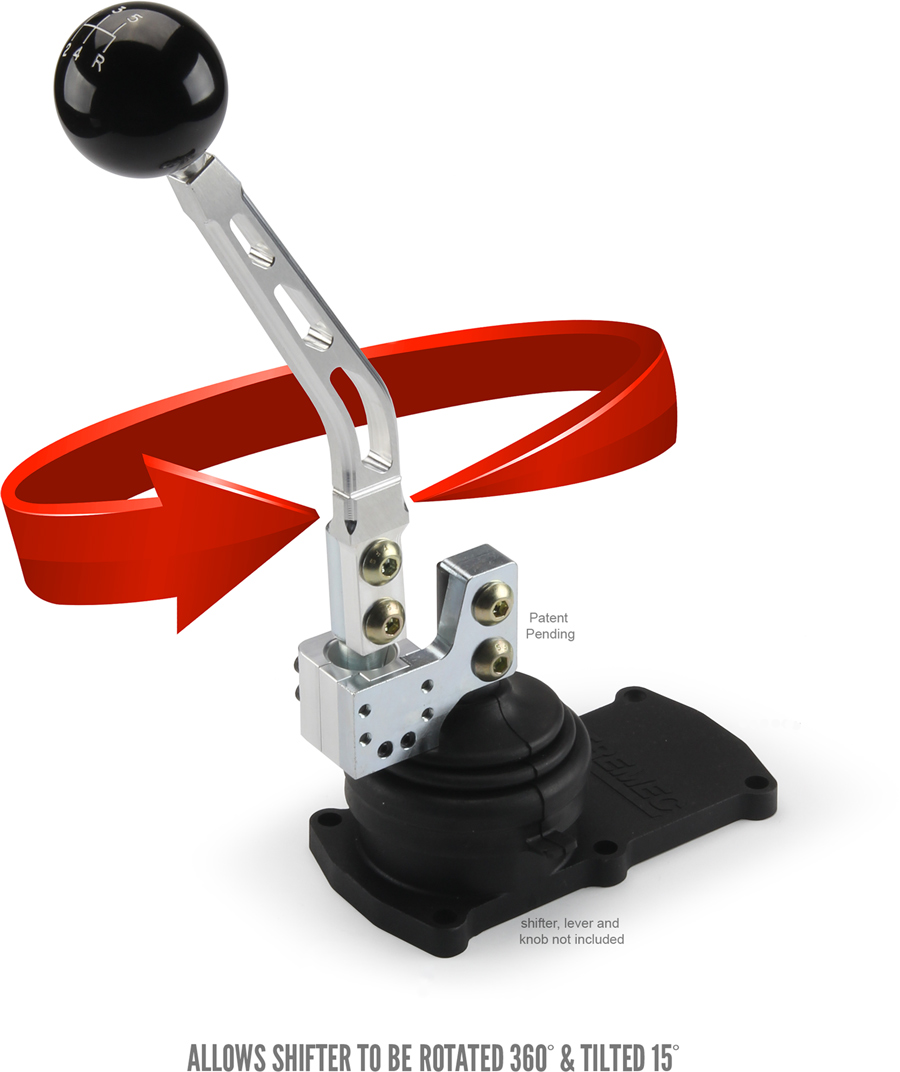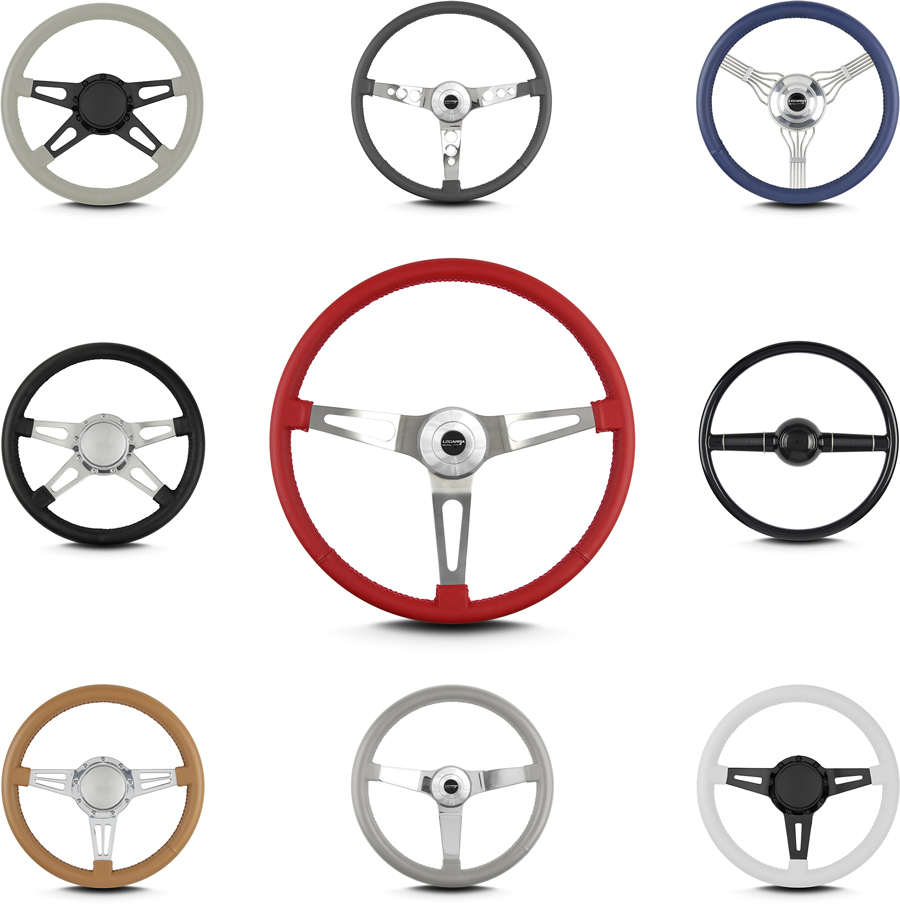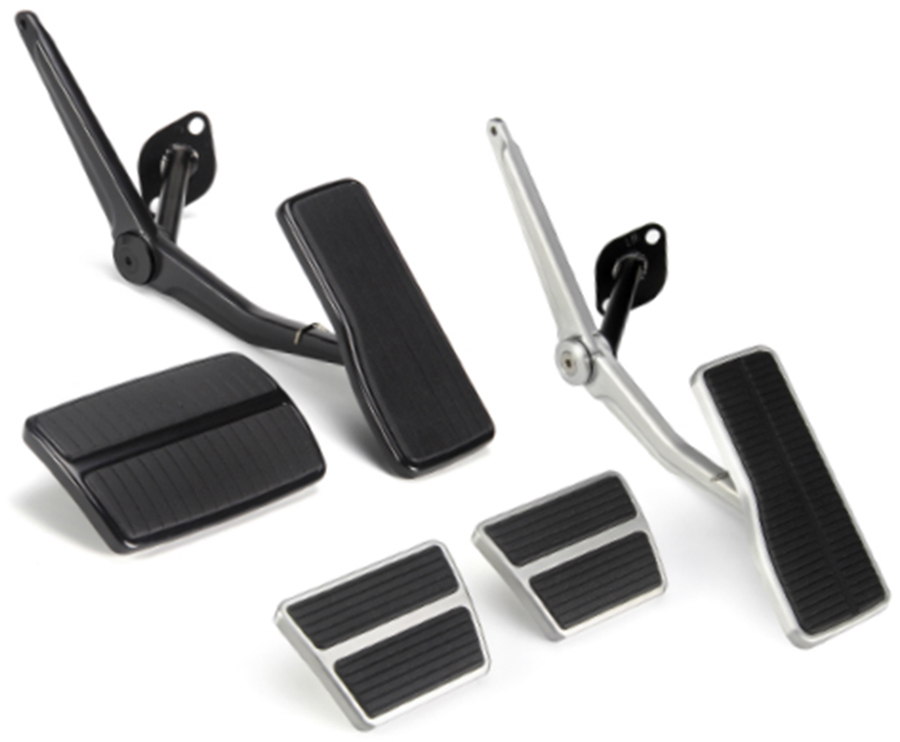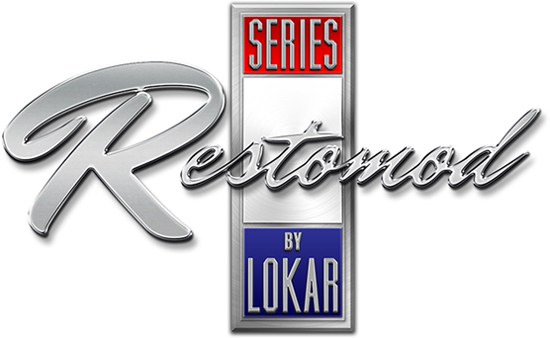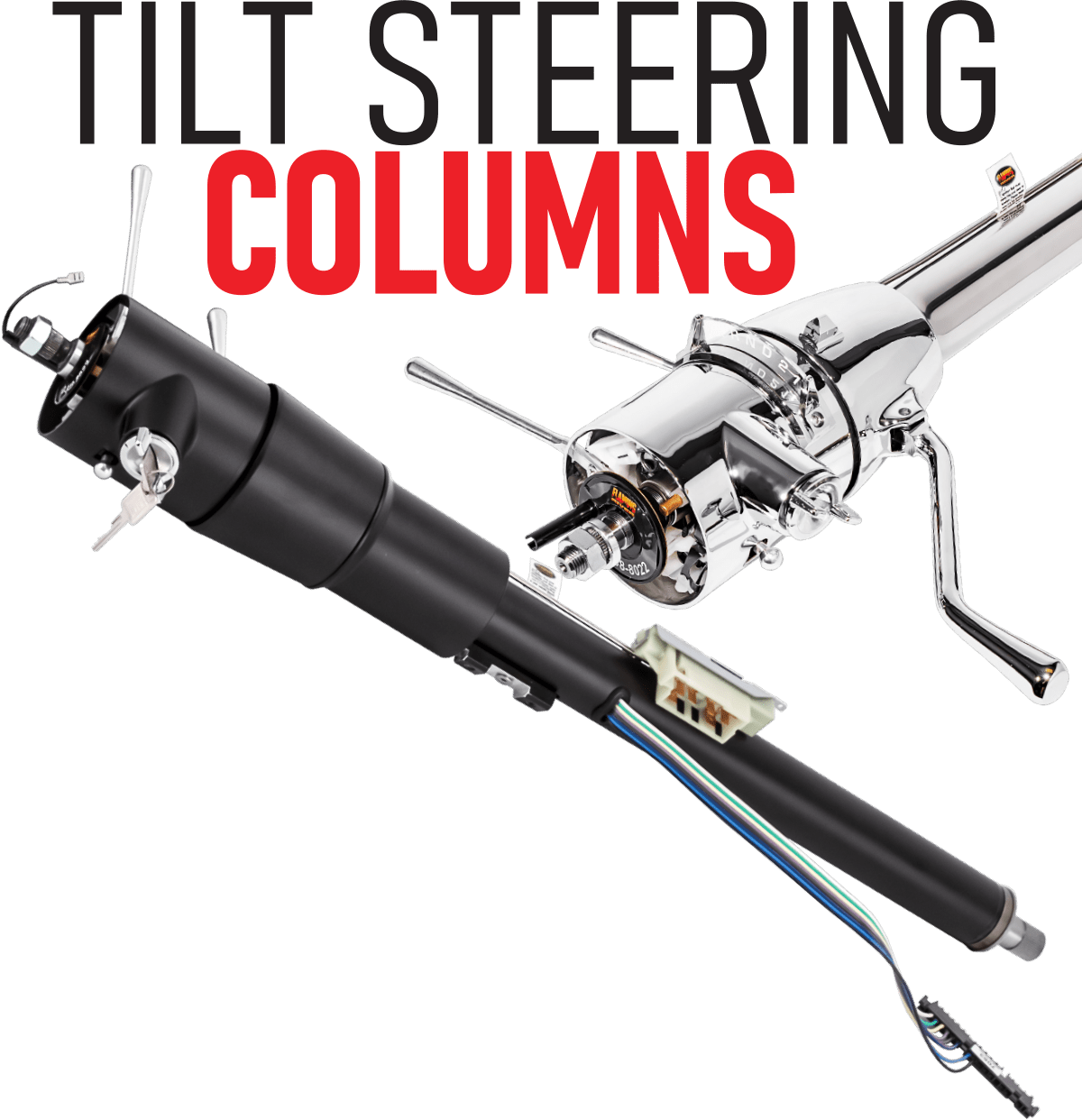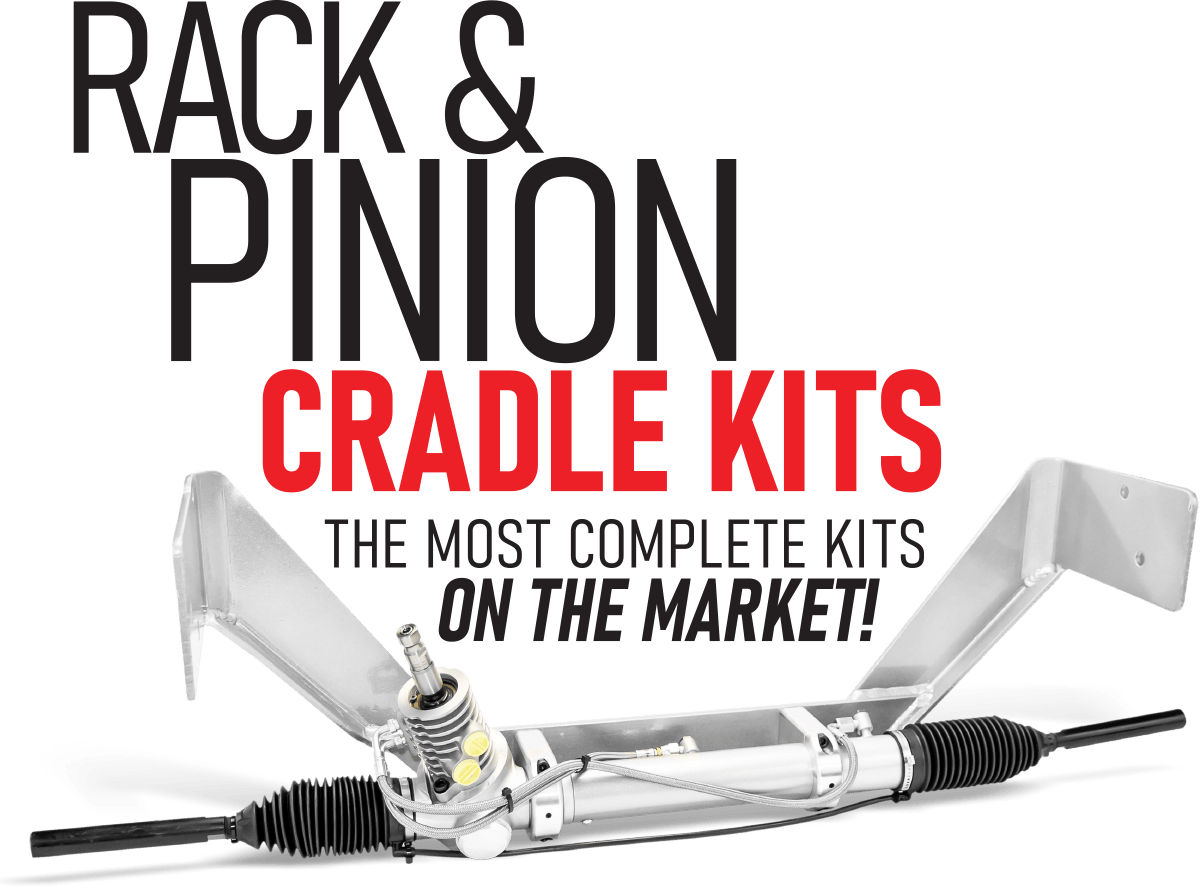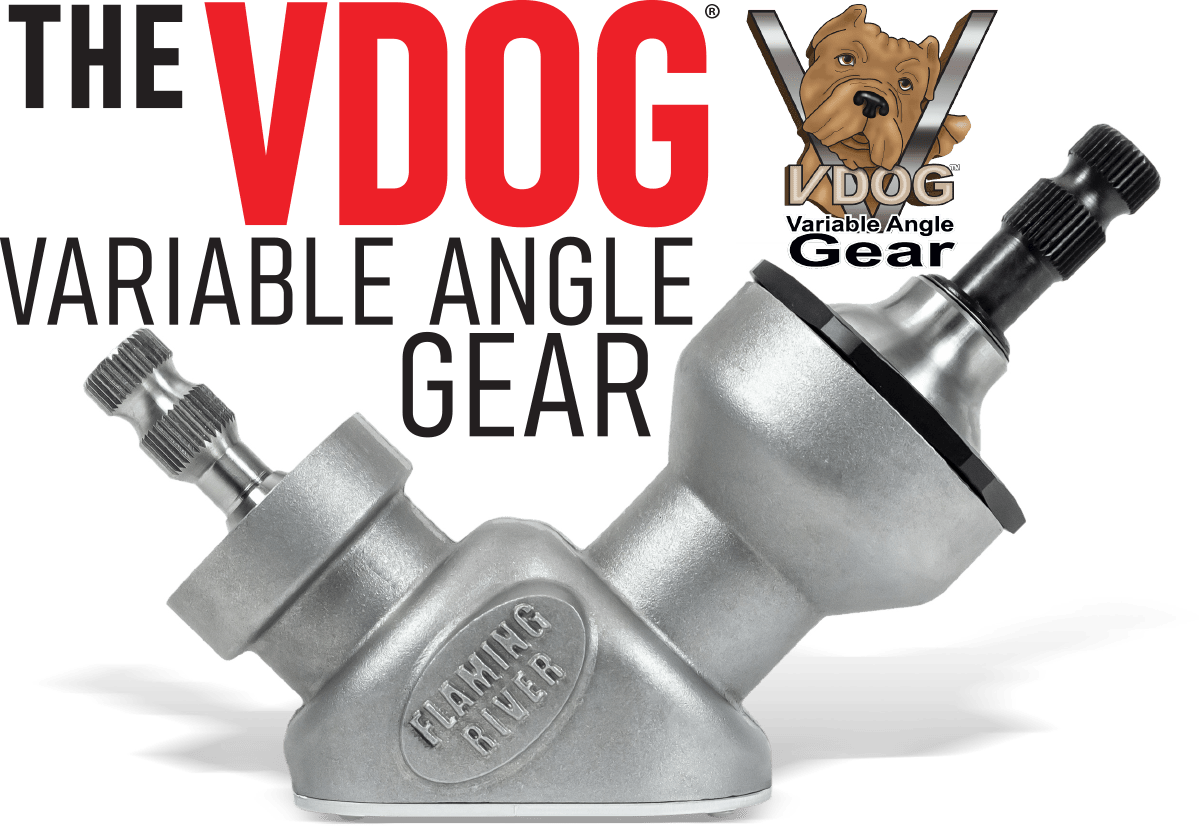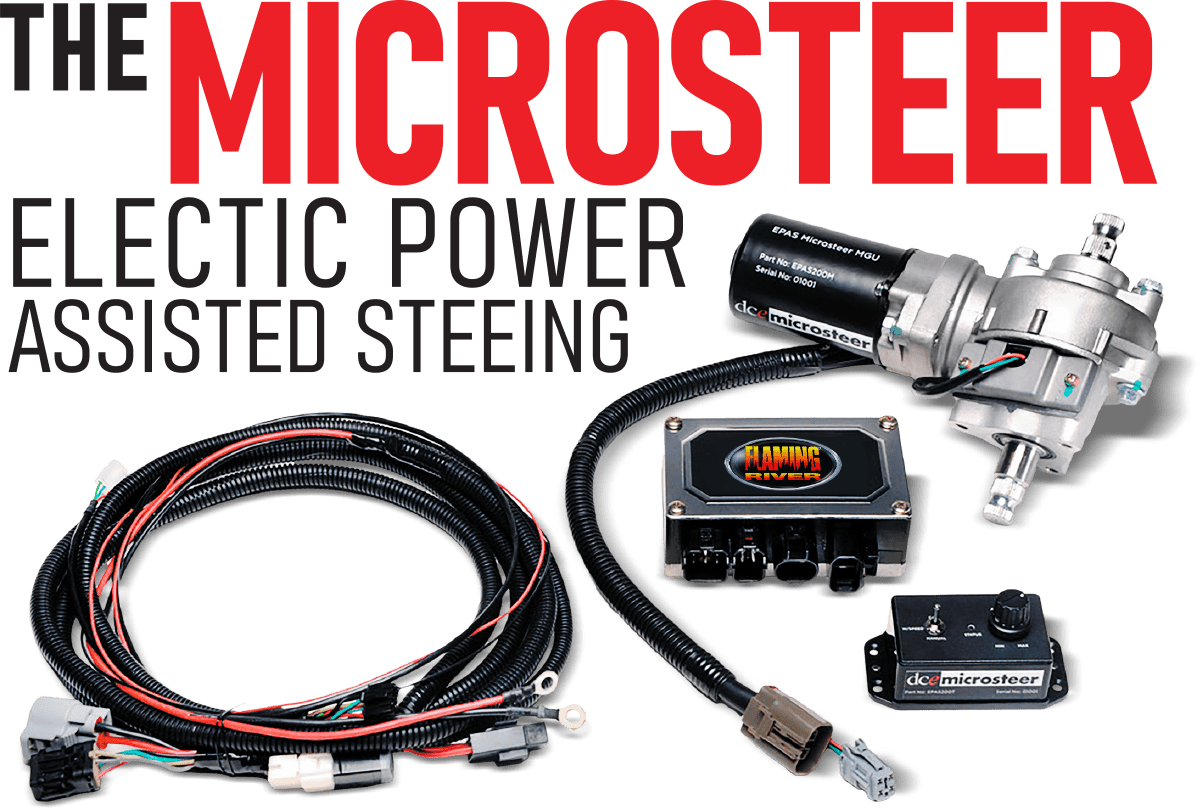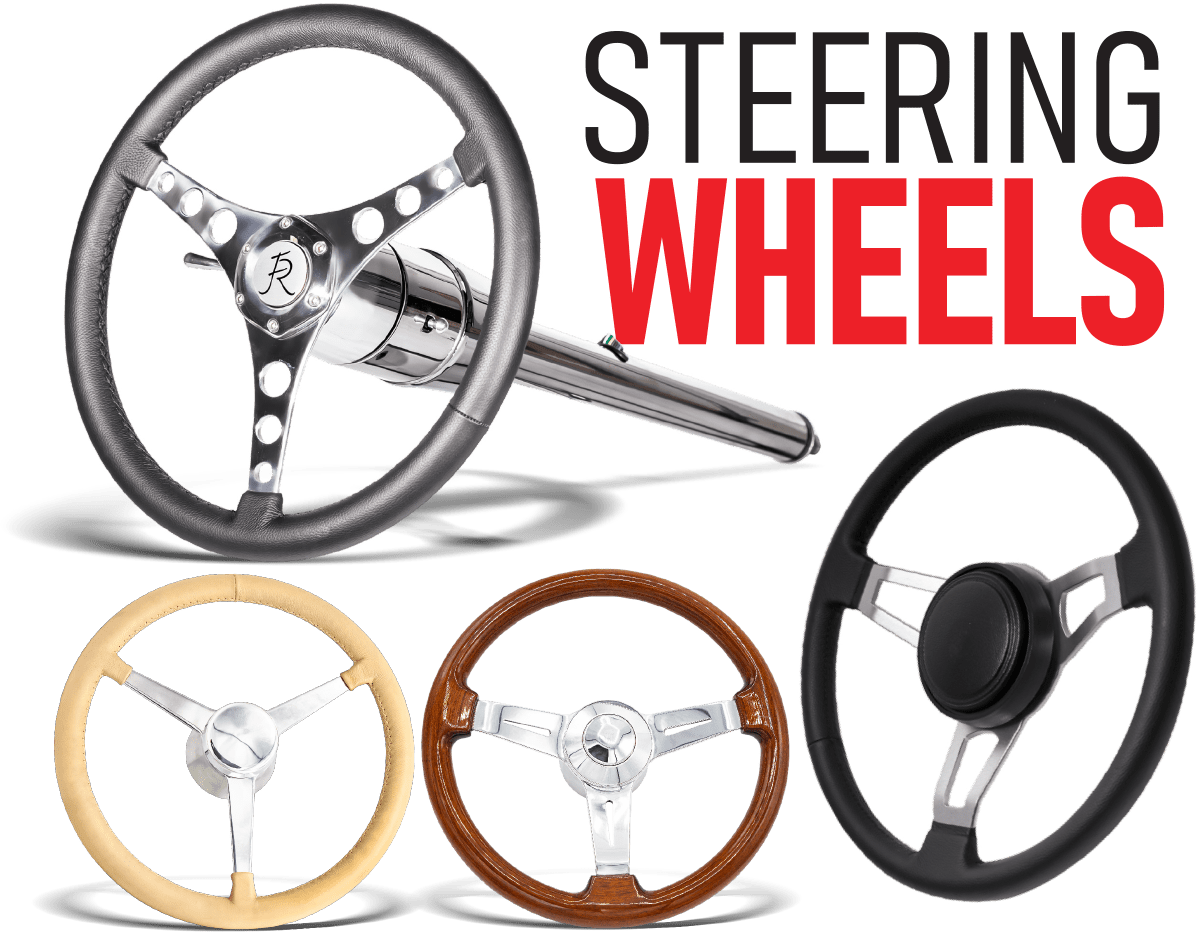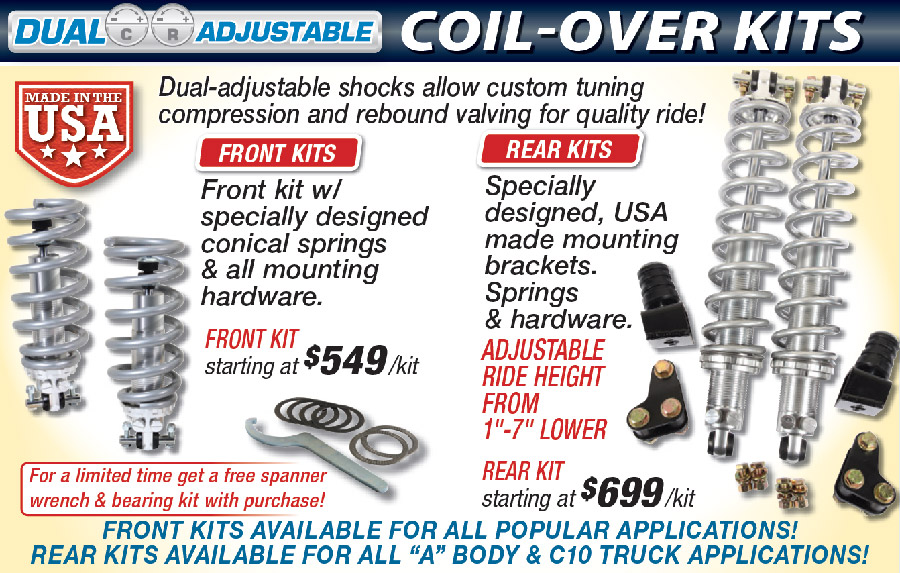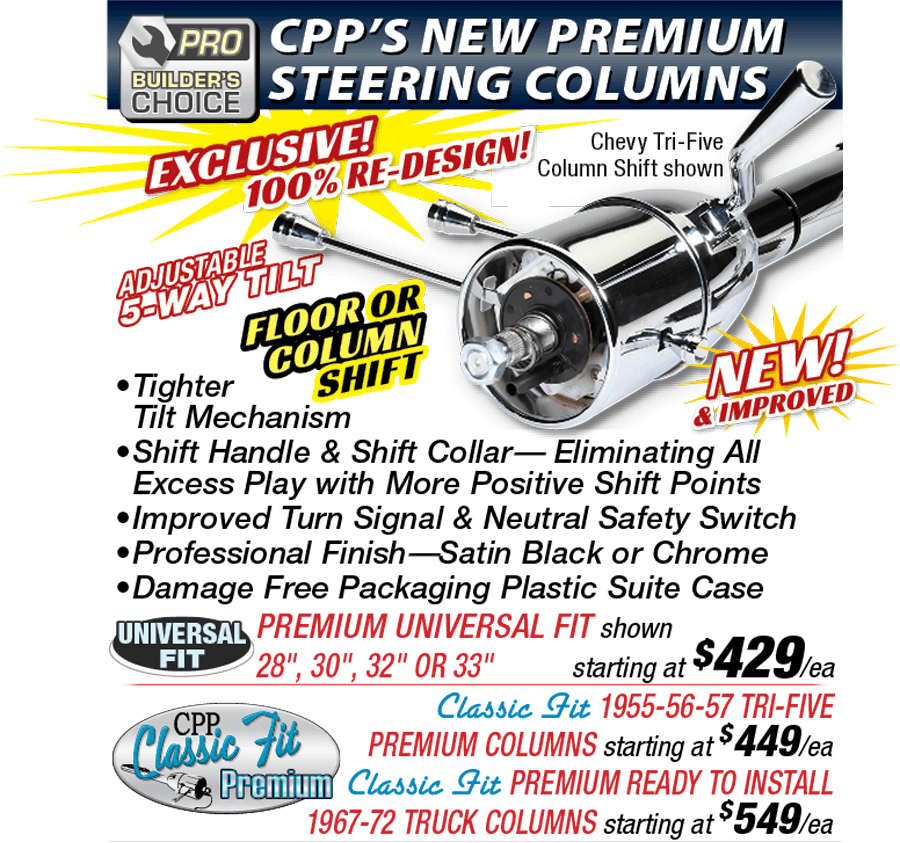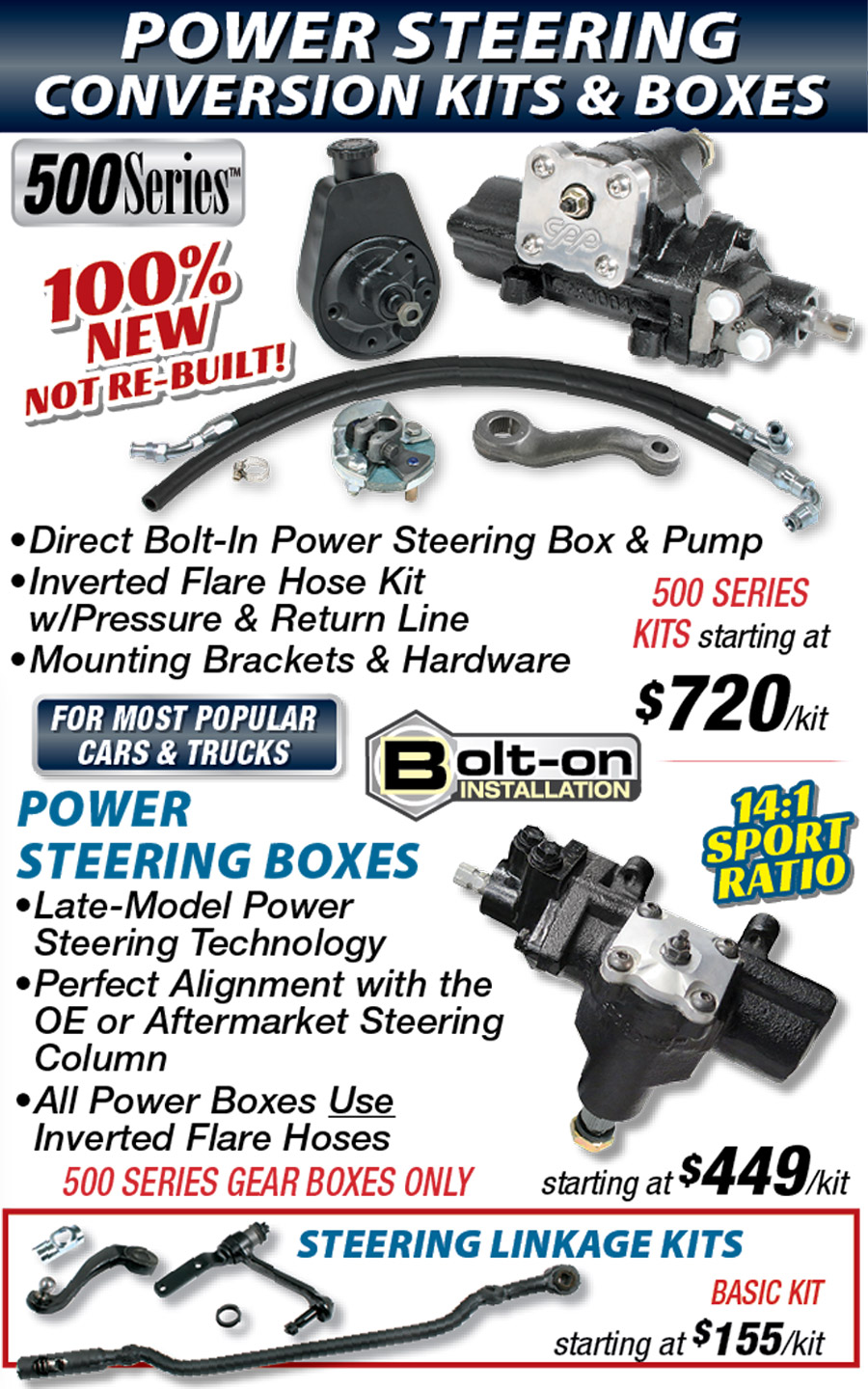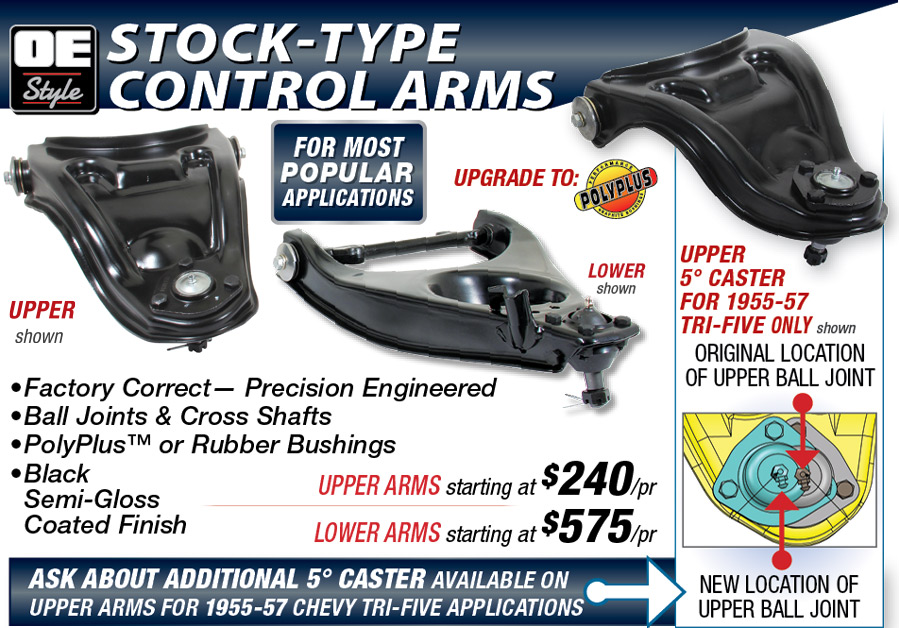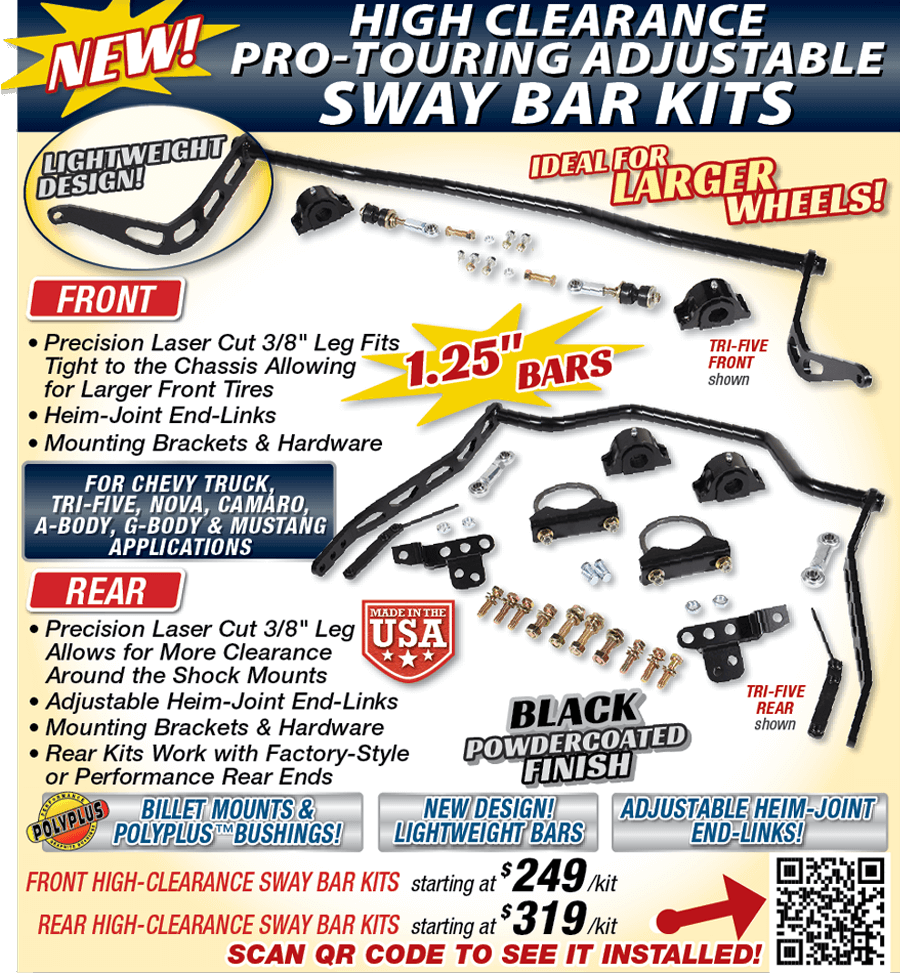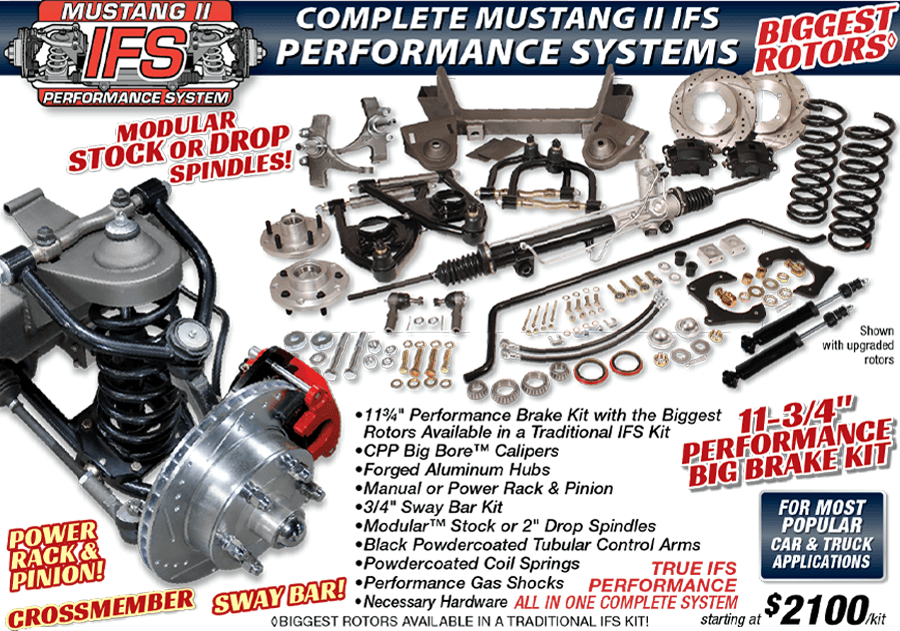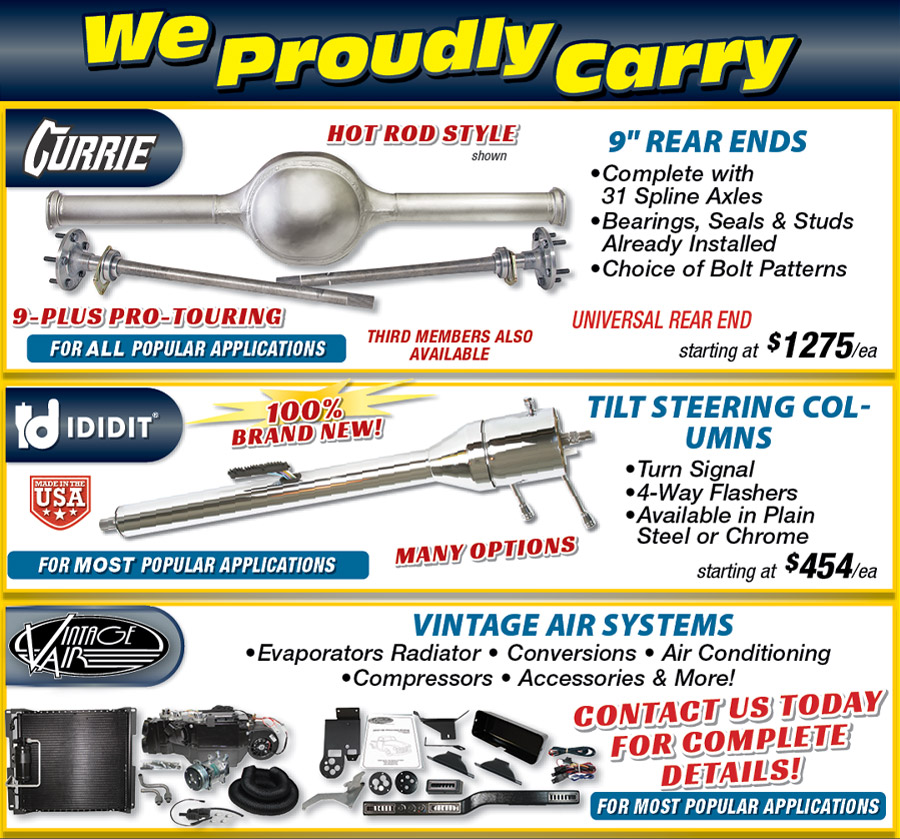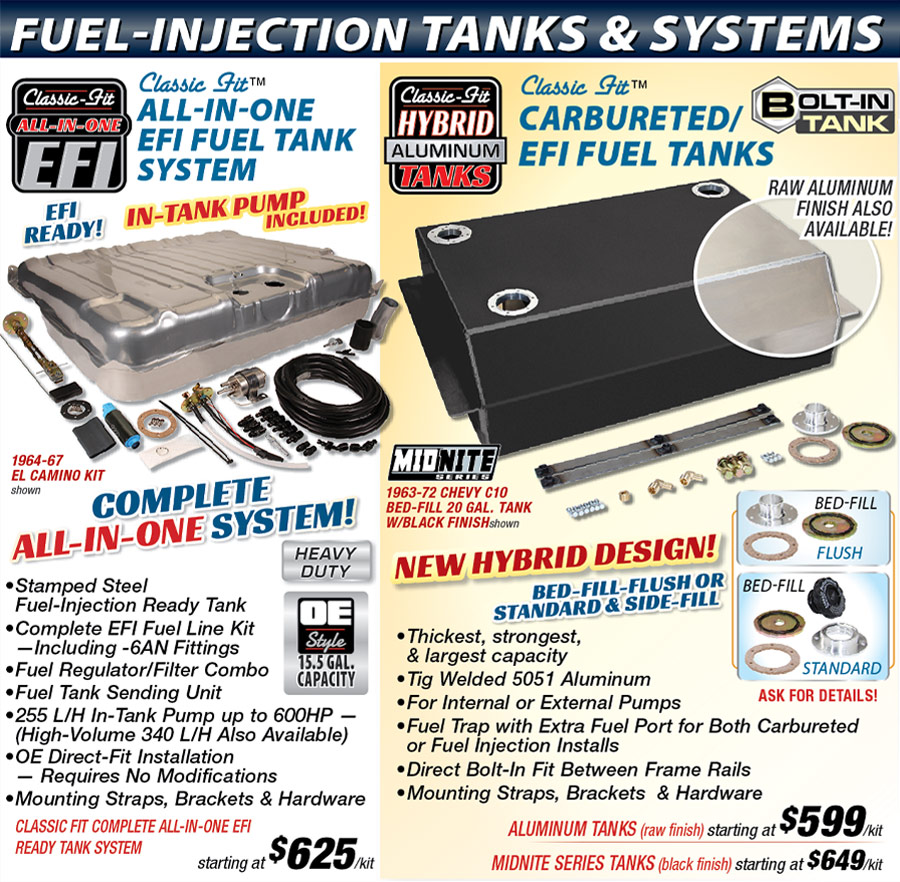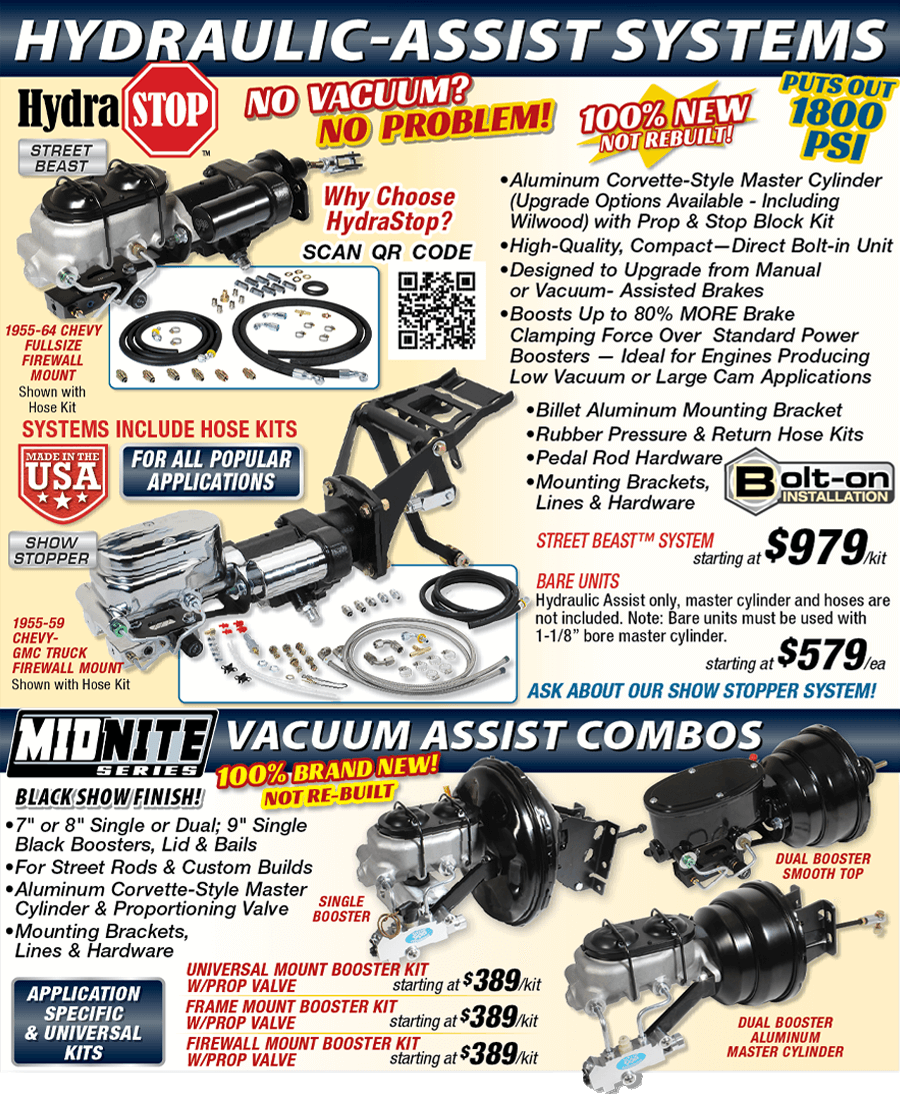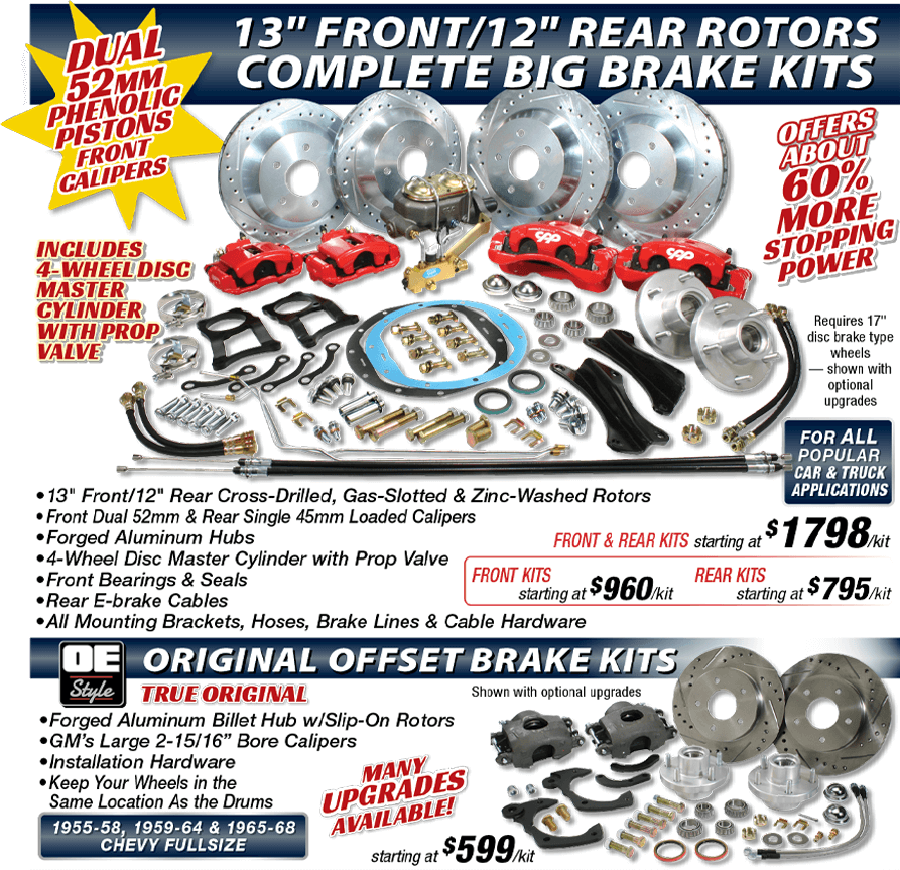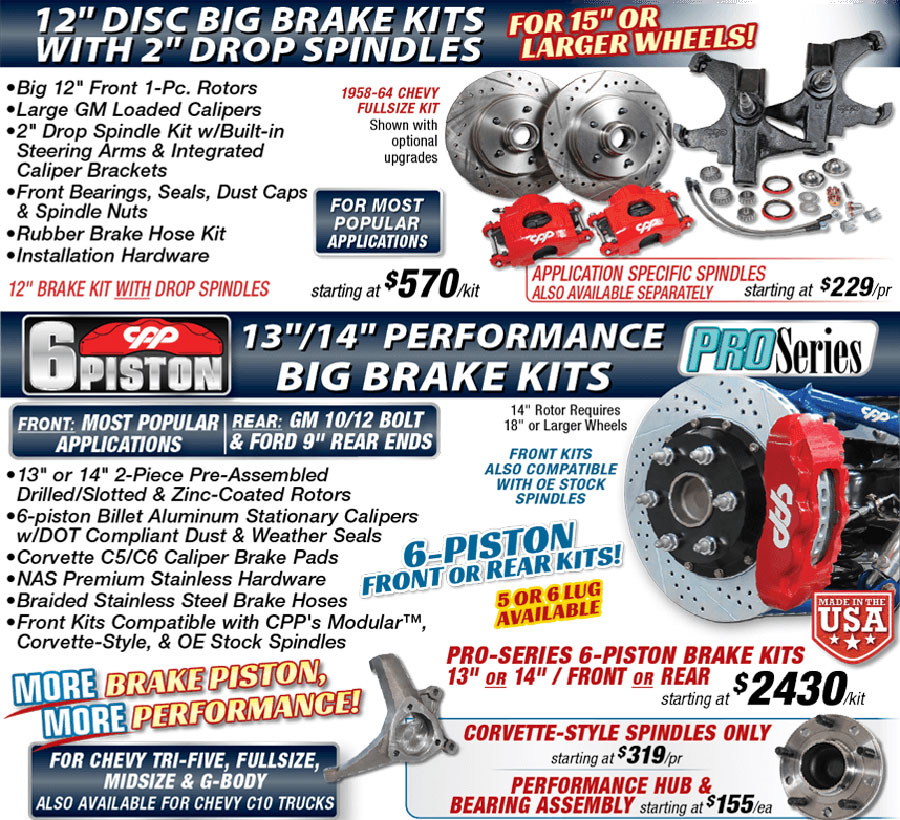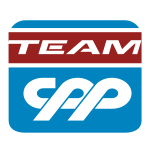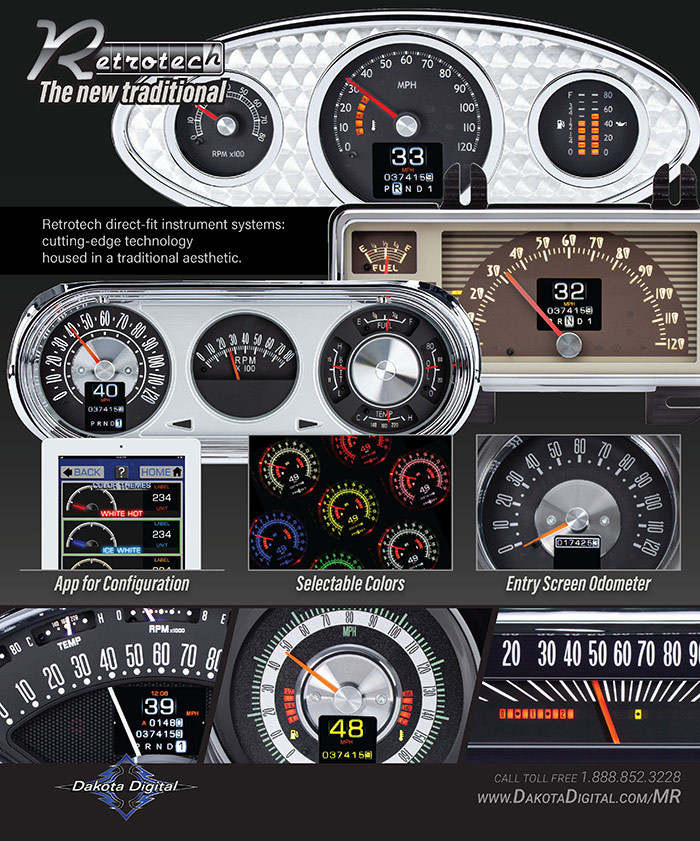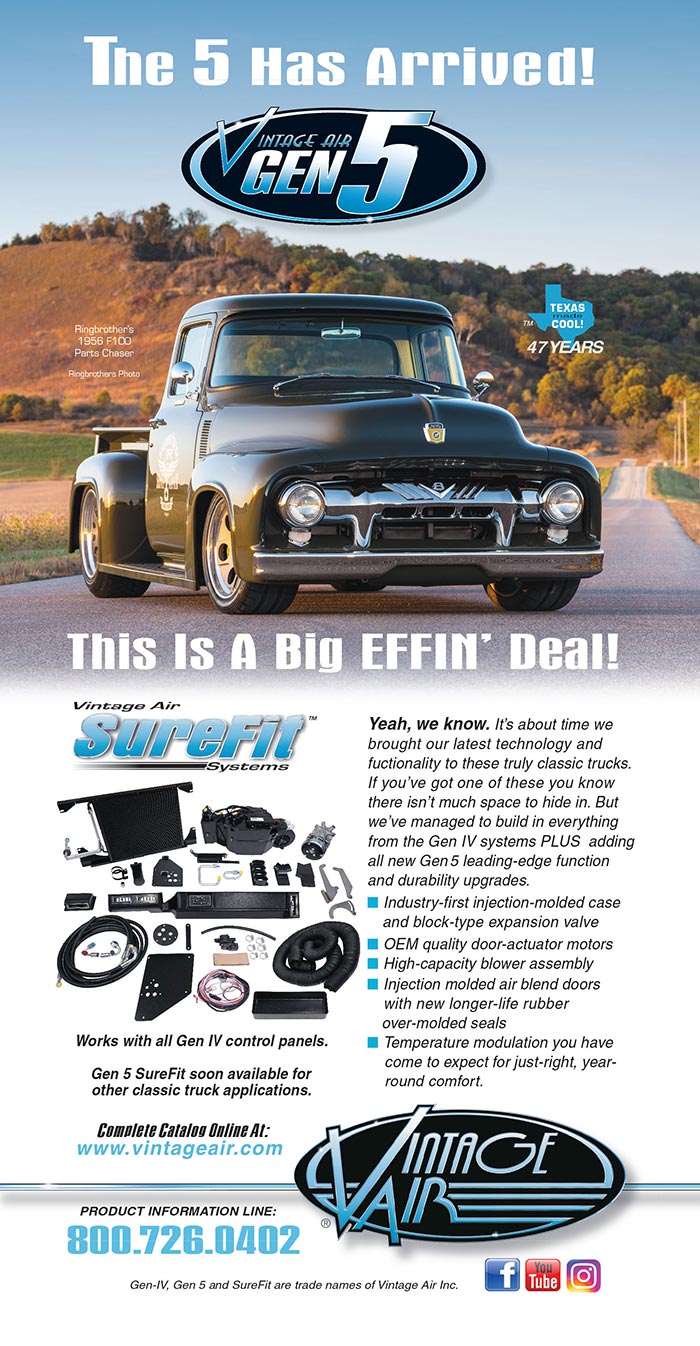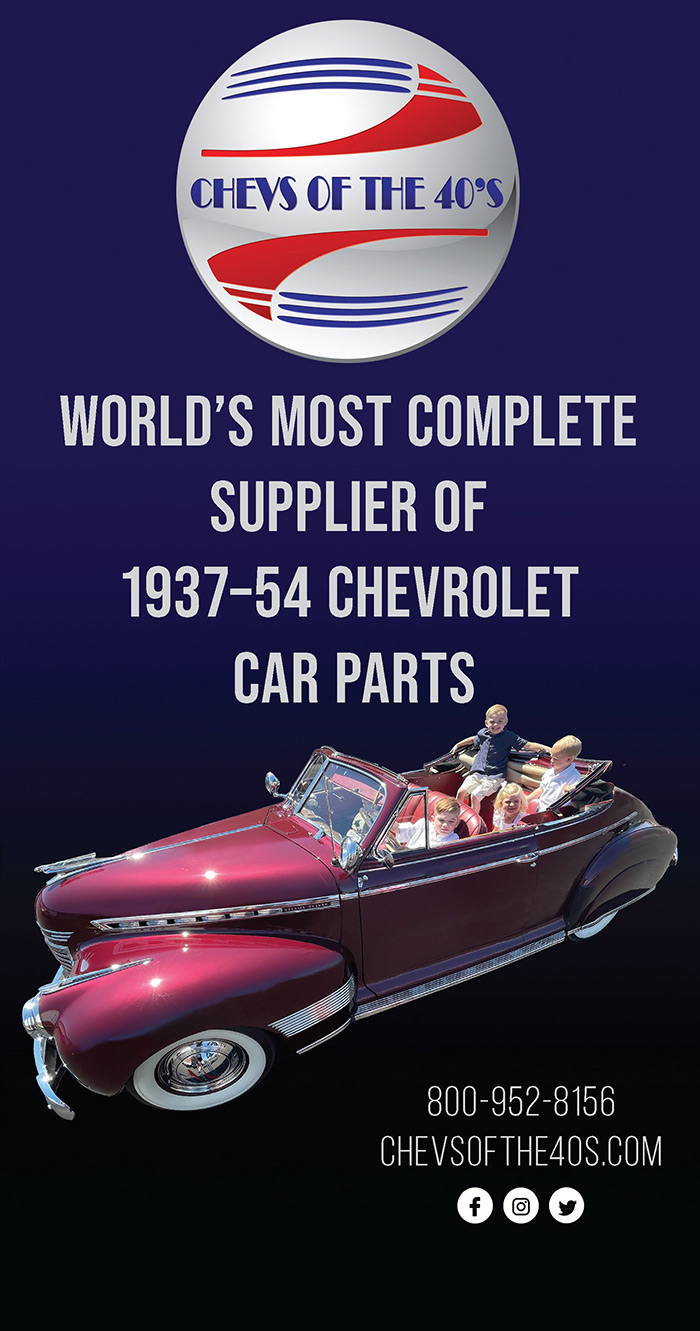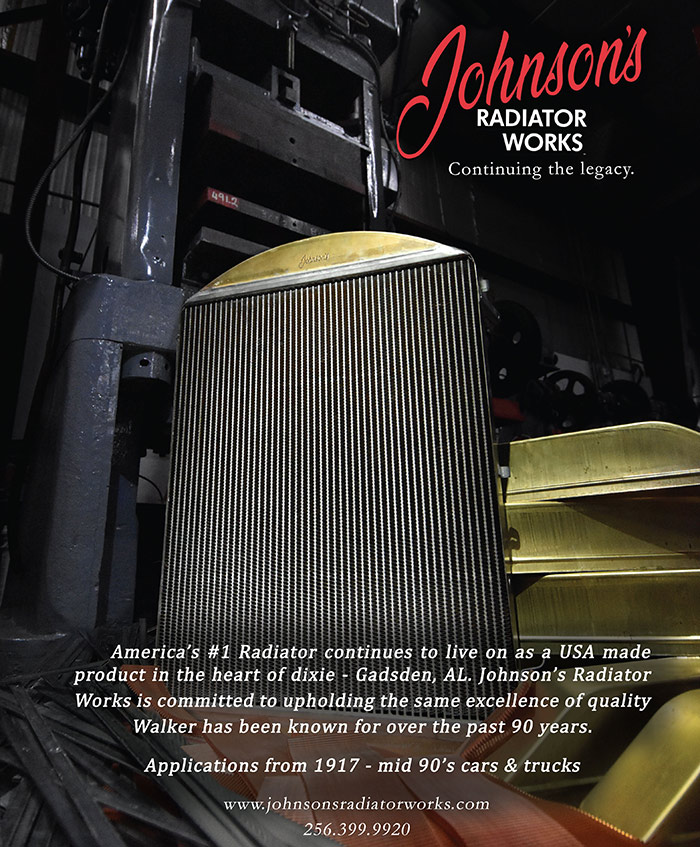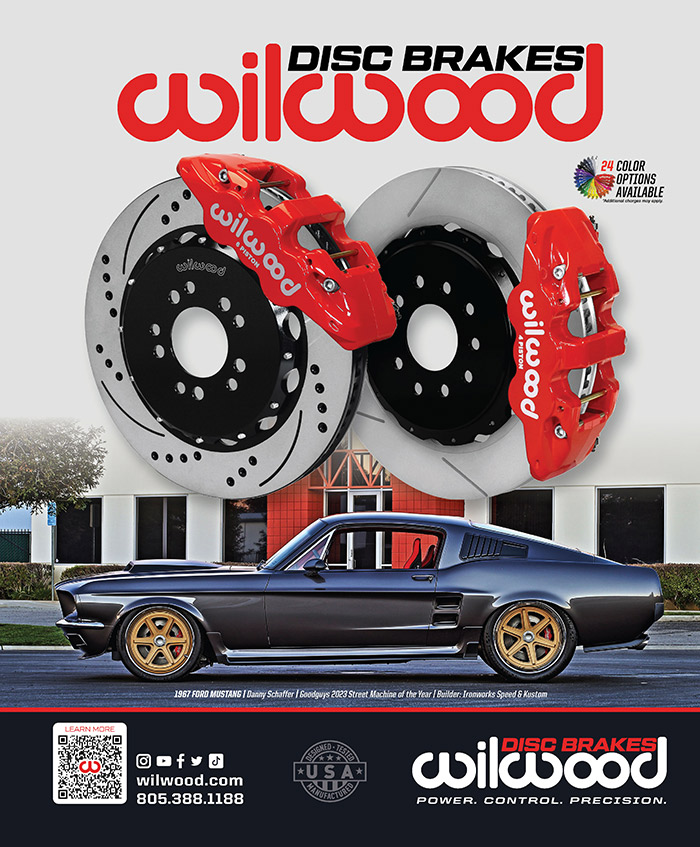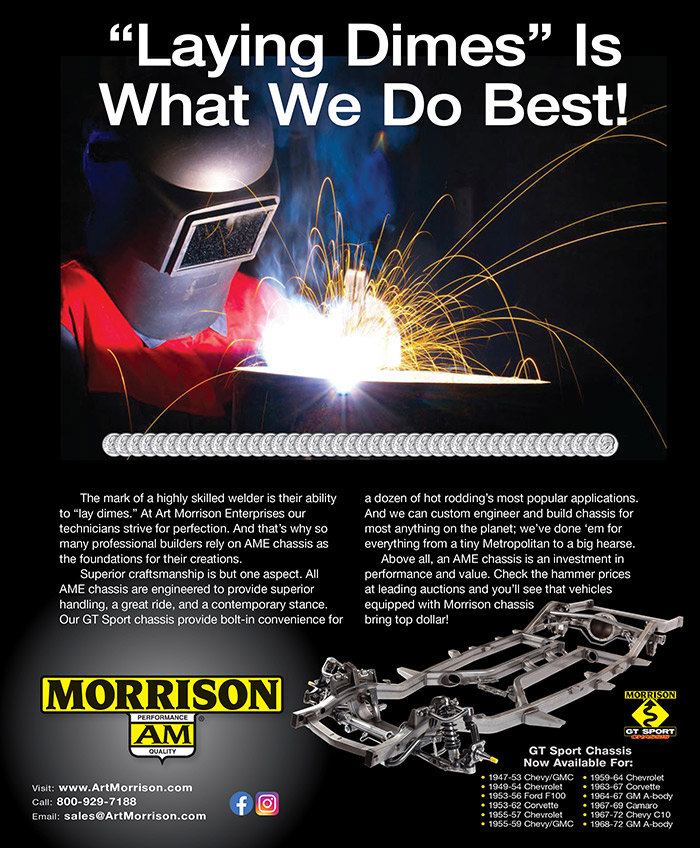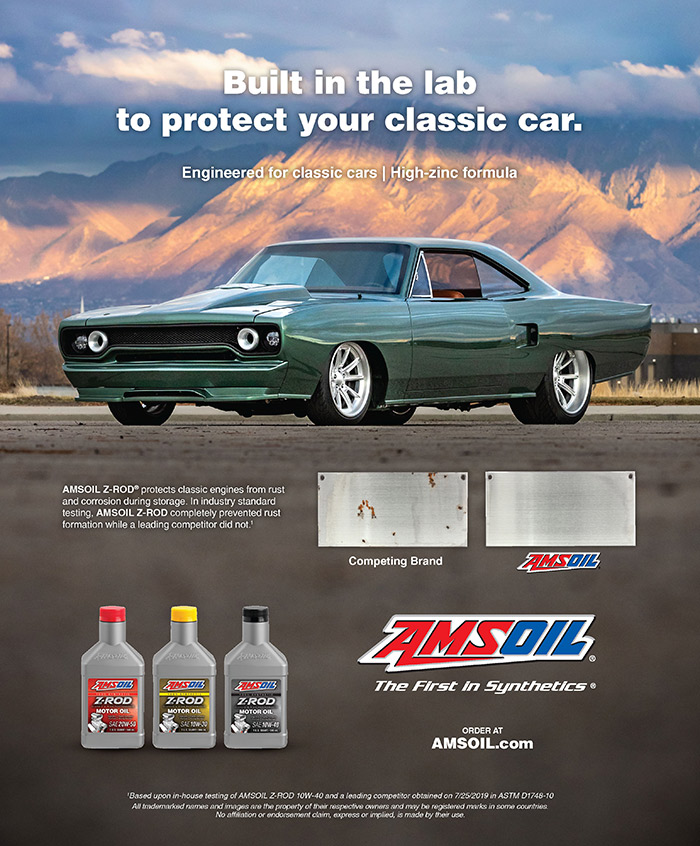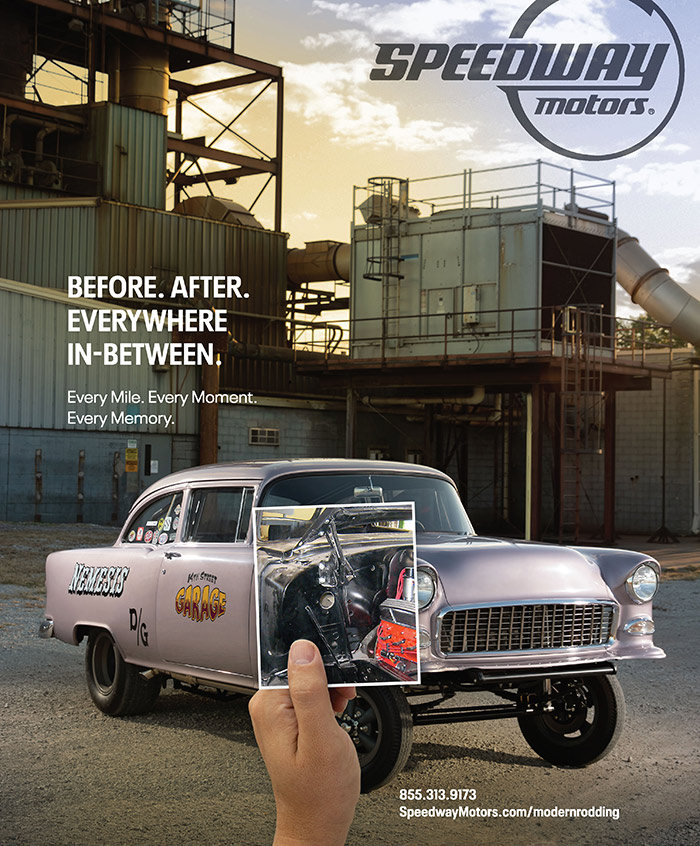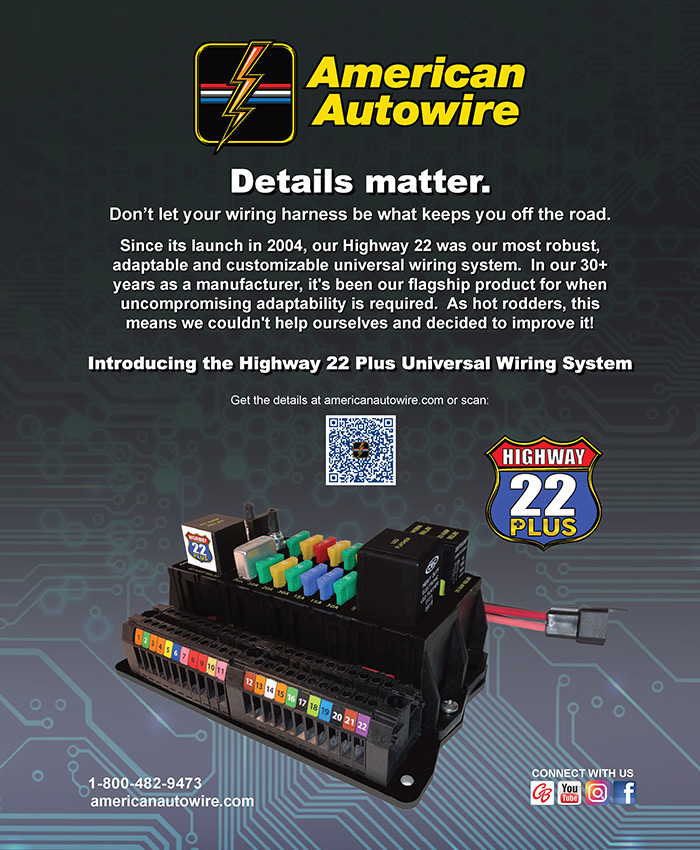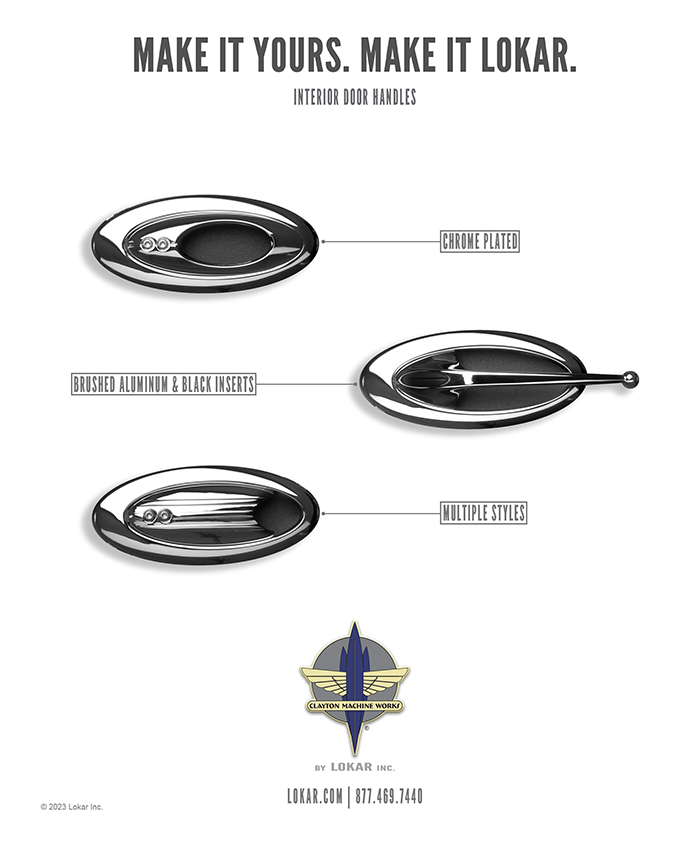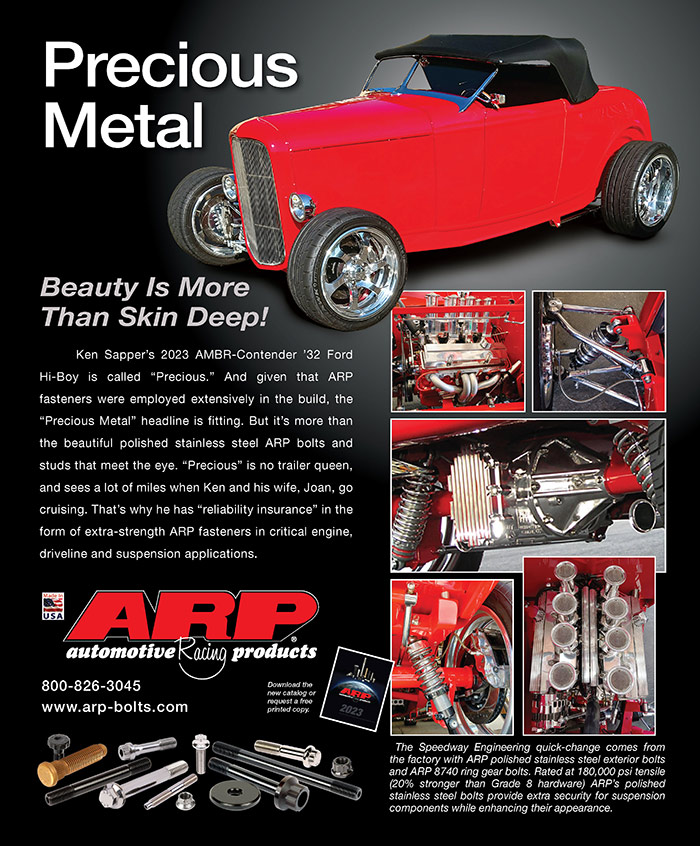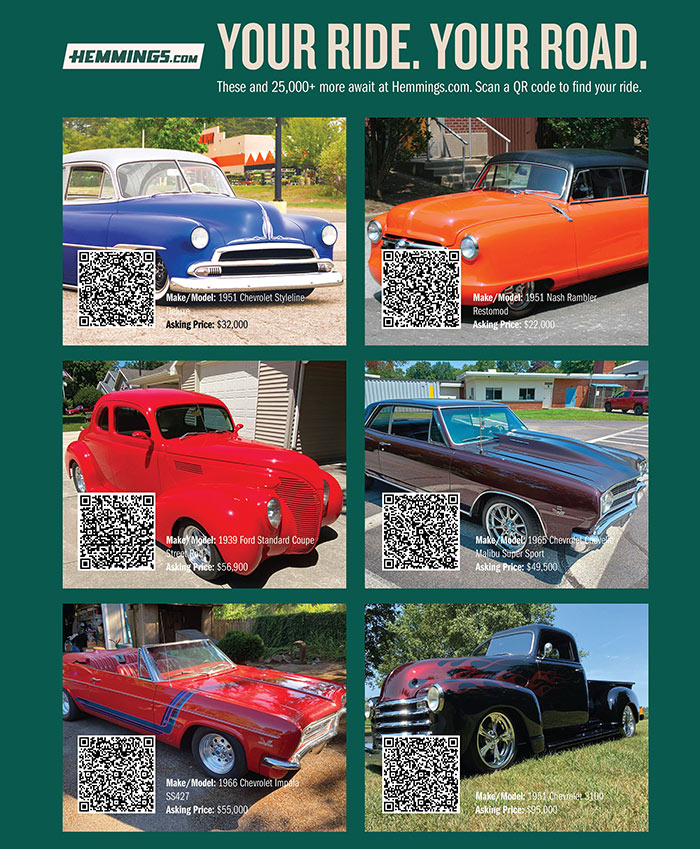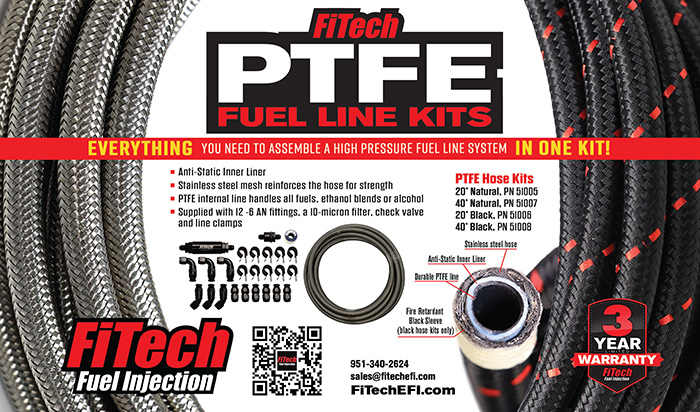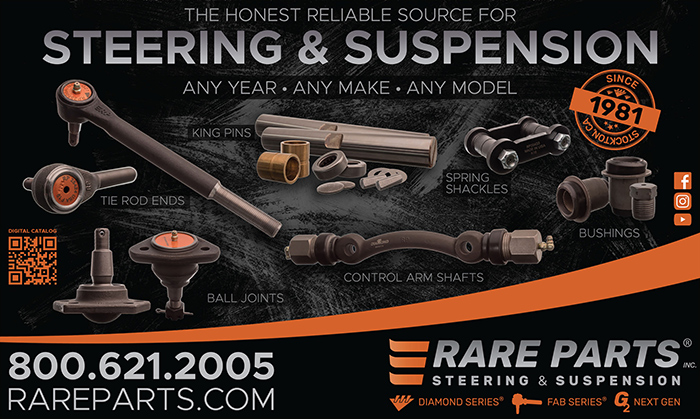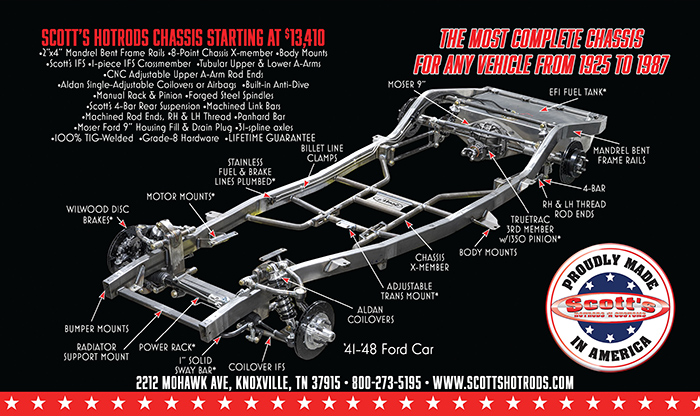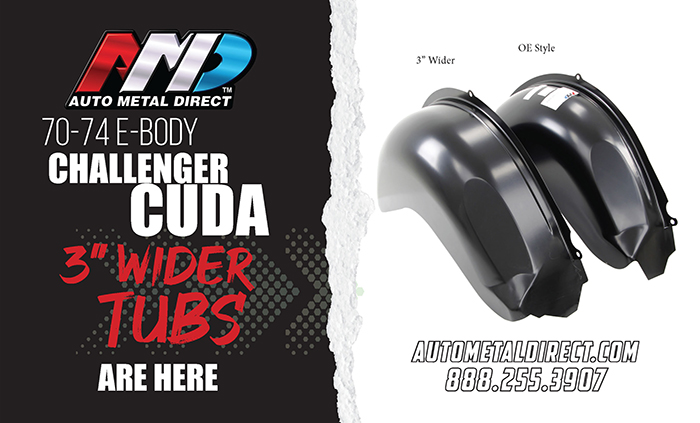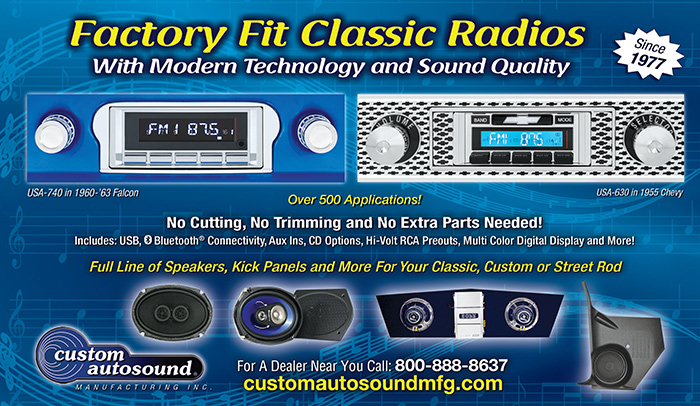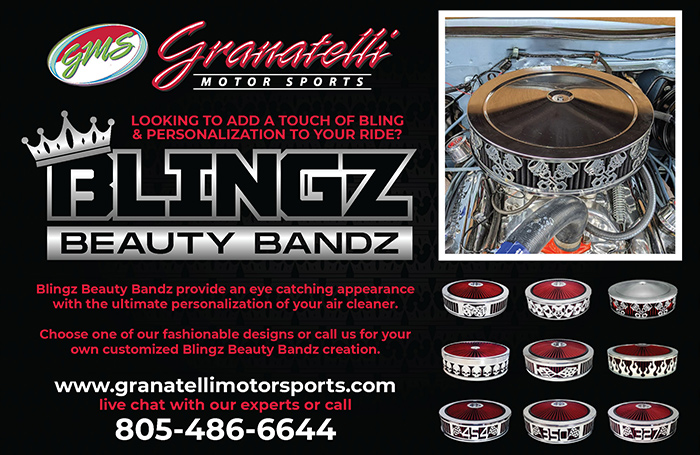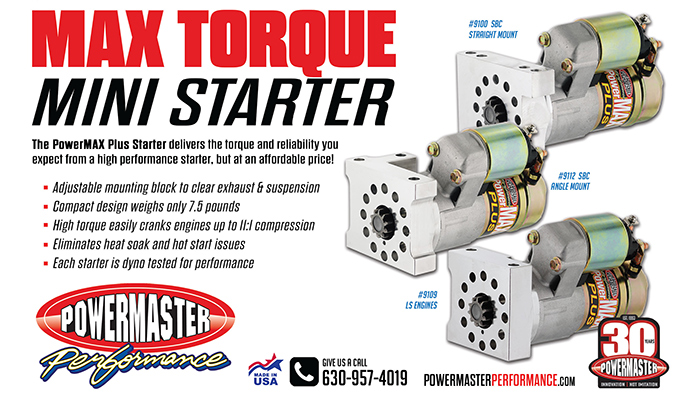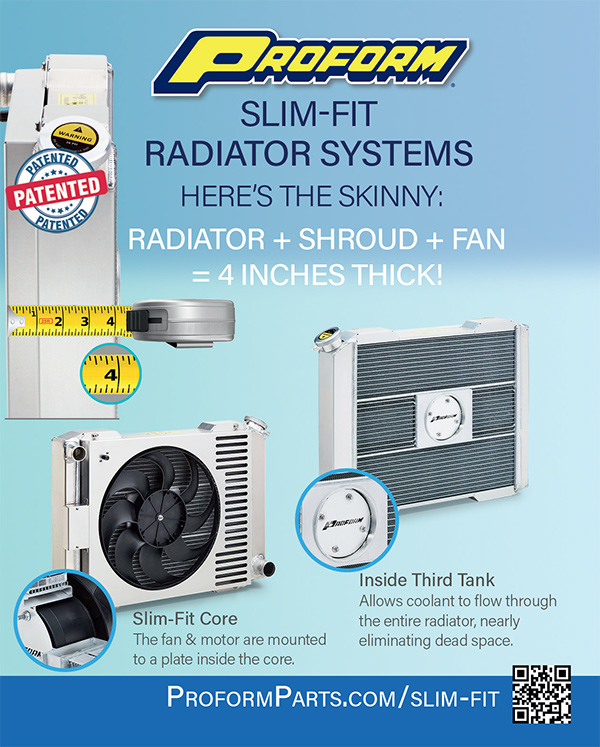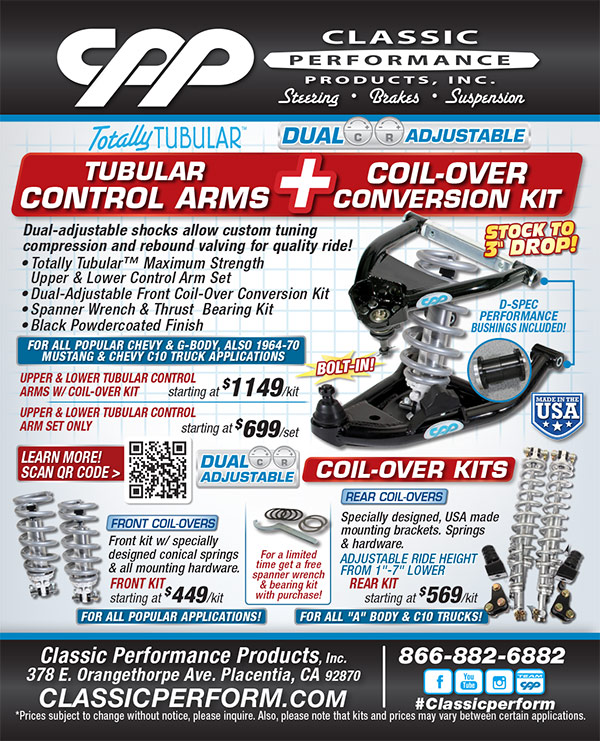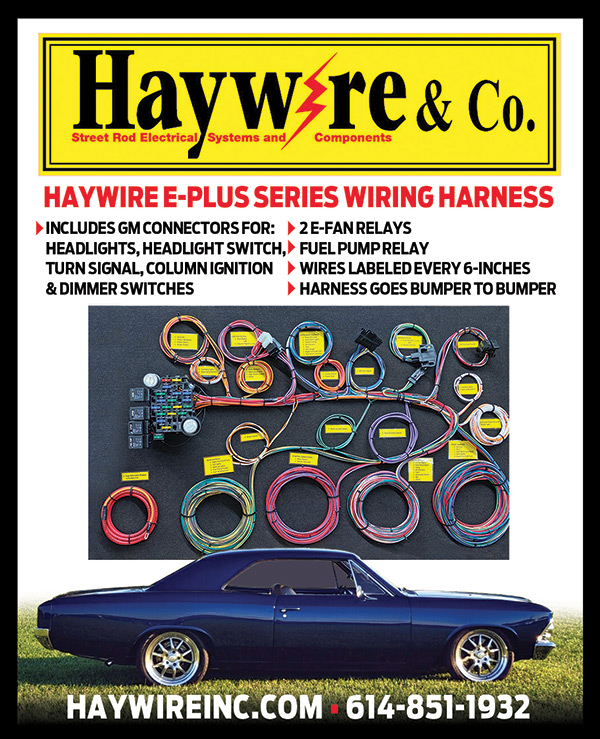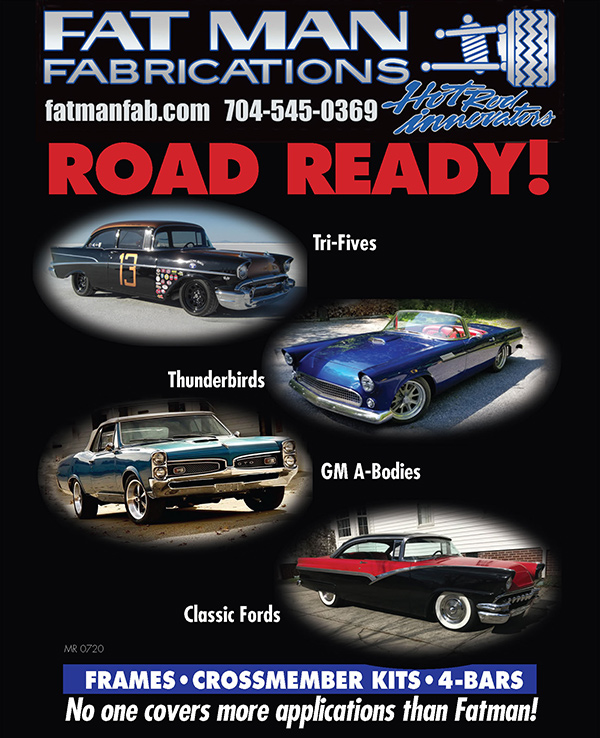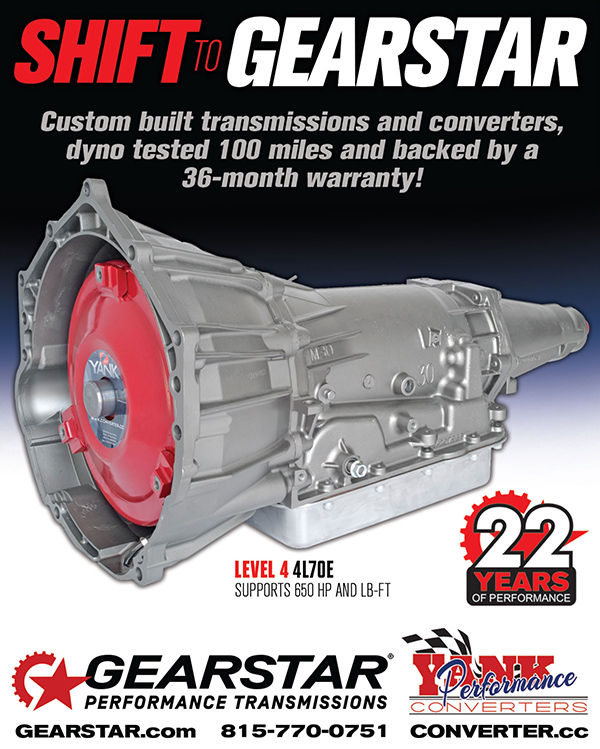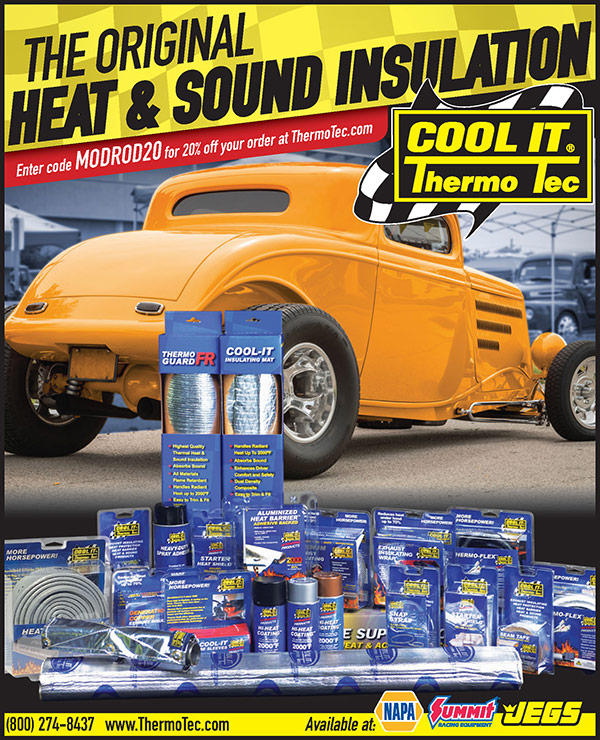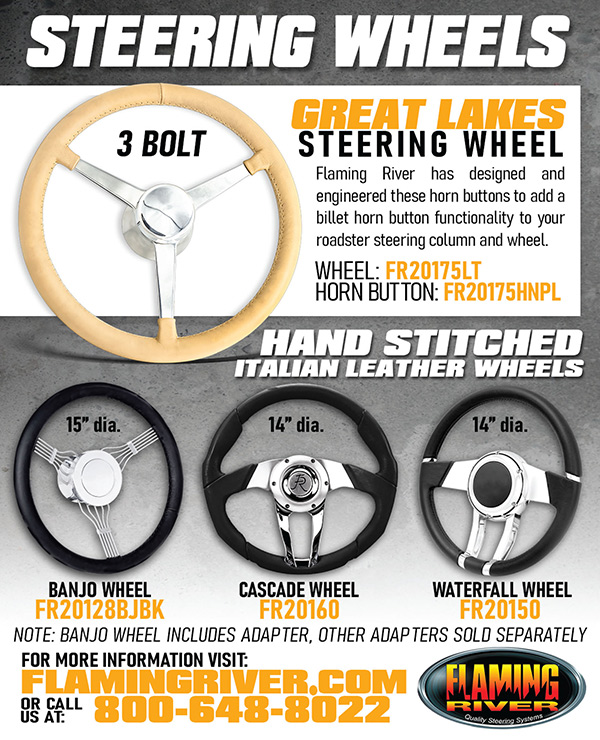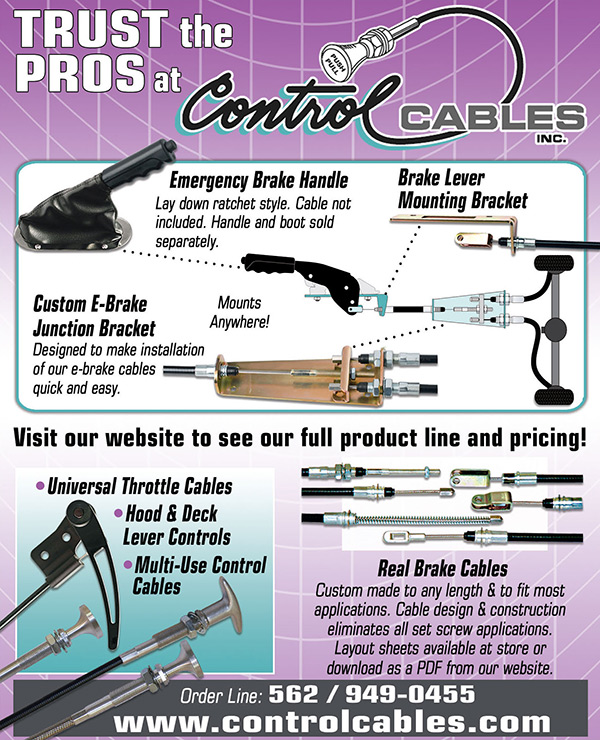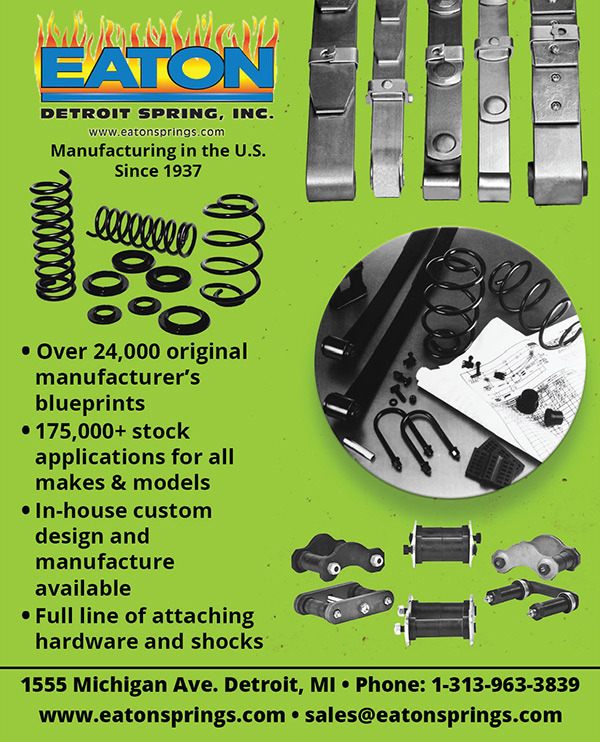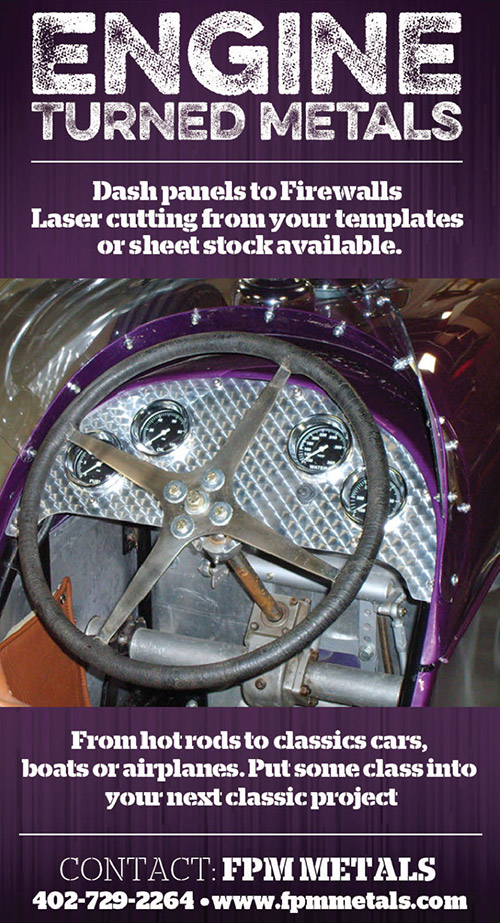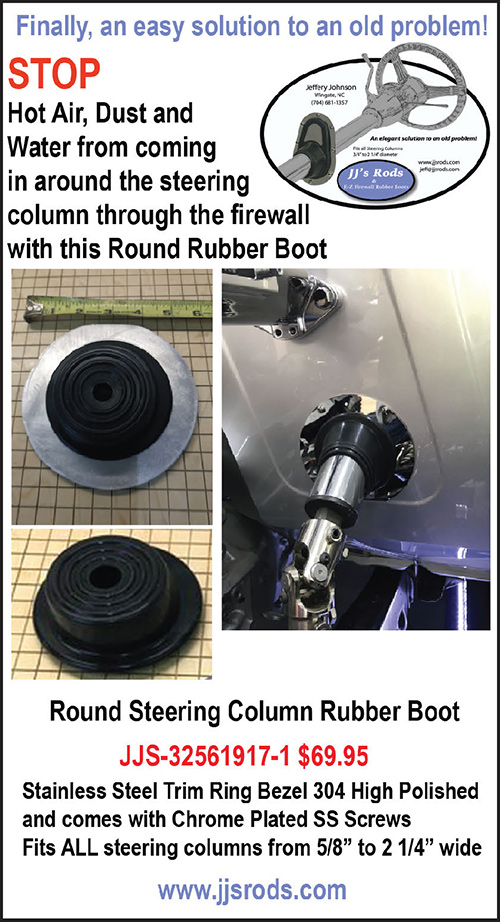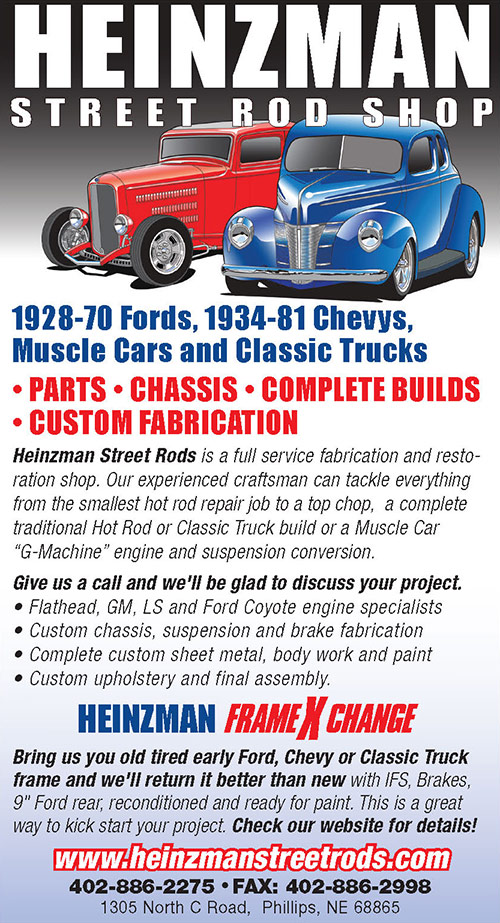
How To Rework
An Early Firewall
Changing Out
A ’67 Nova’s
Underpinnings
& Wrapping Up
Project ’57 Ford
Ranch Wagon
How To Rework An Early Firewall
Changing Out A ’67 Nova’s Underpinnings
Project ’57 Ford Ranch Wagon
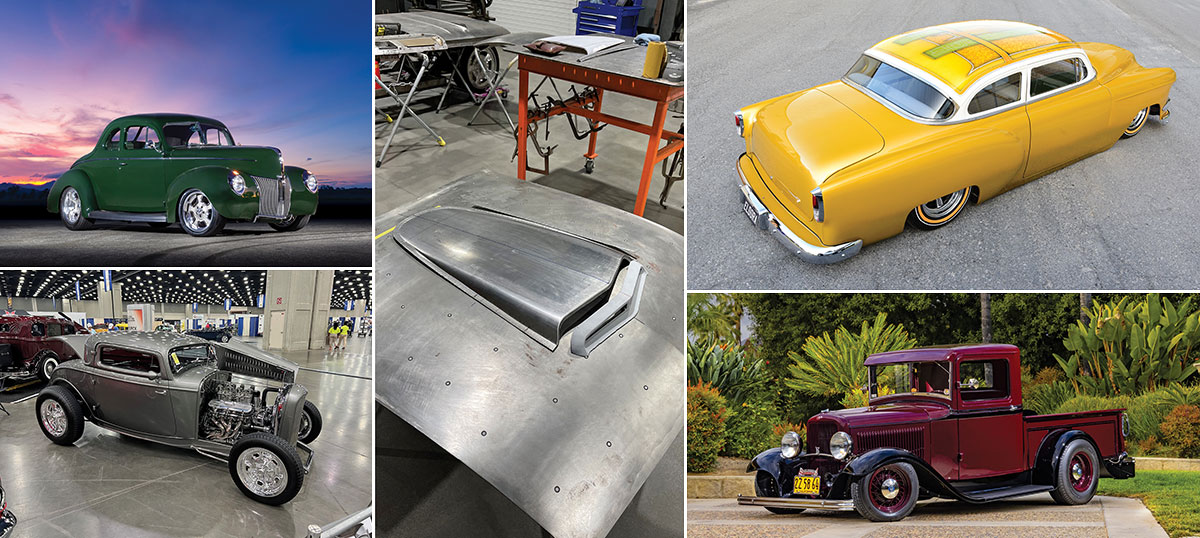
By Brian Brennan, Photography by John Jackson
By Eric Geisert, Photography by Wes Allison
By Brian Brennan, Photography by Wes Allison
By Dale M. Moreau, Photography by the Author
By Chuck Vranas, Photography by the Author
By Tommy Lee Byrd, Photography by Diny Divers
By Chris Shelton, Photography by Brian Brennan
By Ron Covell, Photography by Jason Scudellari
By Ron Covell, Photography by Rodger Lee, Artwork by Tavis Highlander
By Brian Brennan, Photography by the Author

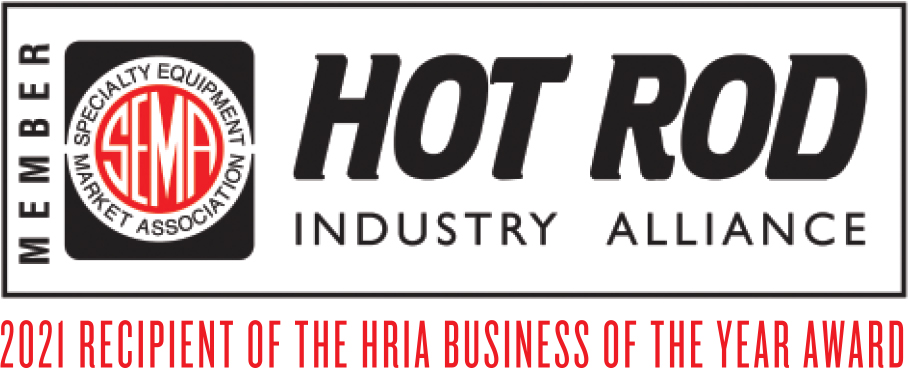
378 E. Orangethorpe Ave. Placentia, California 92870
#ClassicPerform

BRIAN BRENNAN
bbrennan@inthegaragemedia.com
TIM FOSS
tfoss@inthegaragemedia.com
YASMIN FAJATIN
yfajatin@inthegaragemedia.com
SARAH GONZALES
sgonzales@inthegaragemedia.com
ROB MUNOZ
rmunoz@inthegaragemedia.com
PATRICIA LUDI
pludi@inthegaragemedia.com
Wes Allison, Rodney Bauman, Gerry Burger, Tommy Lee Byrd, Ron Ceridono, Michael Christensen, Ron Covell, Grant Cox, John Drummond, Eric Geisert, John Gilbert, Joe Greeves, Ken Gross, John Jackson, Chadly Johnson, Barry Kluczyk, Scotty Lachenauer, Don Lindfors, Ryan Manson, Josh Mishler, Dale Moreau, Don Prieto, Todd Ryden, Jason Scudellari, Chris Shelton, Tim Sutton, Chuck Vranas, John Winter — Writers and Photographers
Travis Weeks Advertising Sales Manager
Mark Dewey National Sales Manager
Patrick Walsh Sales Representative
ads@inthegaragemedia.com
ModernRodding.com
AllChevyPerformance.com
ClassicTruckPerformance.com
InTheGarageMedia.com
subscription@inthegaragemedia.com
(833) 985-9171
InTheGarageMedia.com “Online Store”
For bulk back issues of 10 copies or more, contact store@inthegaragemedia.com

![]()
Copyright (c) 2023 In The Garage Media Inc.
Printed in the USA.
The Modern Rodding trademark is a registered trademark of In The Garage Media Inc.

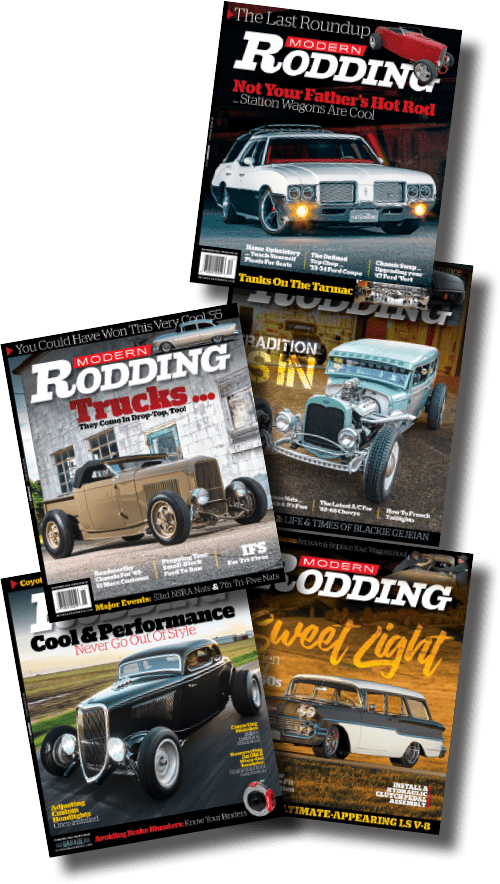
Modern Rodding STARTING OVER
My Favorite Hangout
 by Brian Brennan
by Brian Brennanrowing up, did you have a favorite hangout? Was it the garage? Was it the treehouse made from scrap wood? Was it your buddy’s house? In my case this was true because his mom made great chocolate chip cookies and I could always mooch an extra lunch or dinner. But then there was the local newsstand. Of course, I might have to include the local record shop, which near me was also the newsstand.
Why am I asking? Well, a longtime friend and one of the great all-around hot rodders Mike Chiavetta sent me a note:
“So, as a lifetime participant in buying, reading, and dog earing over 50-plus years of car magazines I consider your latest ‘Mt. Everest’ challenge a winner. Good job to the magazine dimensions and especially the font size, format, car choices, staff, and persistent determination to do what you personally do monthly. Long live MR.”
 By Brian Brennan
By Brian Brennan
 Goodguys’ 2023 PPG Street Machine of
Goodguys’ 2023 PPG Street Machine of 
The Mustang body features widened fender flares, quarter-panel scoops, custom fastback roof vents, and 3-D–printed rocker panel moldings. The rear bumper has been narrowed for a flush fit, the pot metal taillight housings replaced with machined examples, and there’s a custom billet lower valence framing the exhaust tips and finishing off the rear.
Underhood is a supercharged 5.4L V-8 driveline from a late-model Ford G.T. 500 Mustang and the interior follows suit with cutting-edge styling and function with even more CAD-designed one-off components, including the door pulls, center console pieces, and the dash that is filled with advanced digital gauges. All the design elements, details, and processes come together in a way that honors the Mustang legacy, while still giving it a unique modern twist.
 By Brian Brennan
By Brian Brennan

The BIM-01-2-FTCH is designed to read the engine information from new FiTech EFI kits. This module is connected to the units with a supplied 2.5mm “Y” harness, allowing the handheld controller to remain functional.
It will collect and output the following information to Dakota Digital Instrument Systems.

 Photography by John Jackson
Photography by John Jacksonvery hot rod is different but some are unique. At first glance this ’30 Ford sedan belonging to Gerry Kerna of Cranberry Township, Pennsylvania, while very cool looking, appears to be a build style you’ve seen before. It’s only after much closer examination that you realize this lightly channeled Model A sedan is so much more. Gerry is a longtime hot rodder, but this latest effort speaks to her desire to have something different but well within the sphere of what any hot rodder can appreciate.
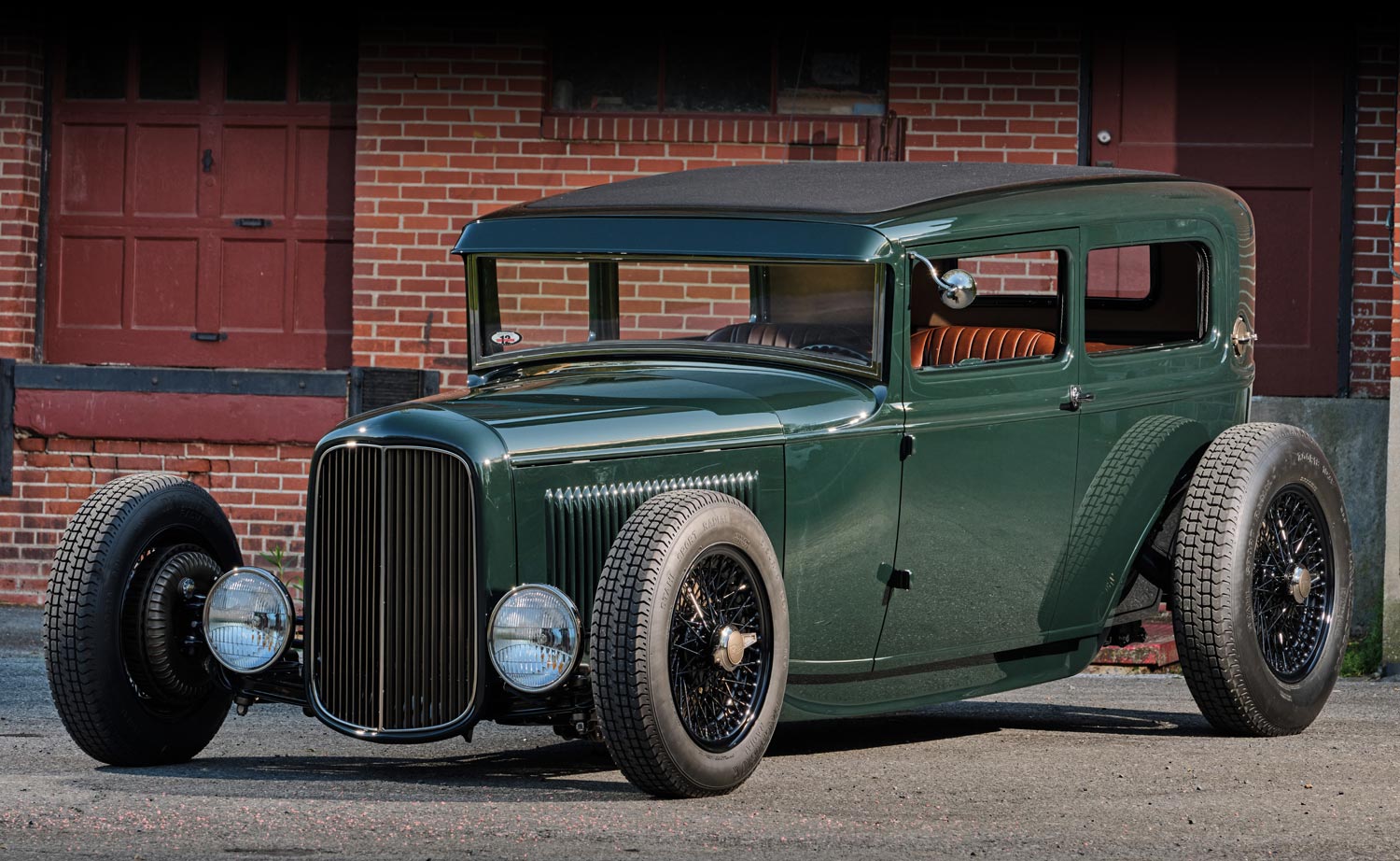
Modern Rodding EVENT
InTheGarageMedia.com
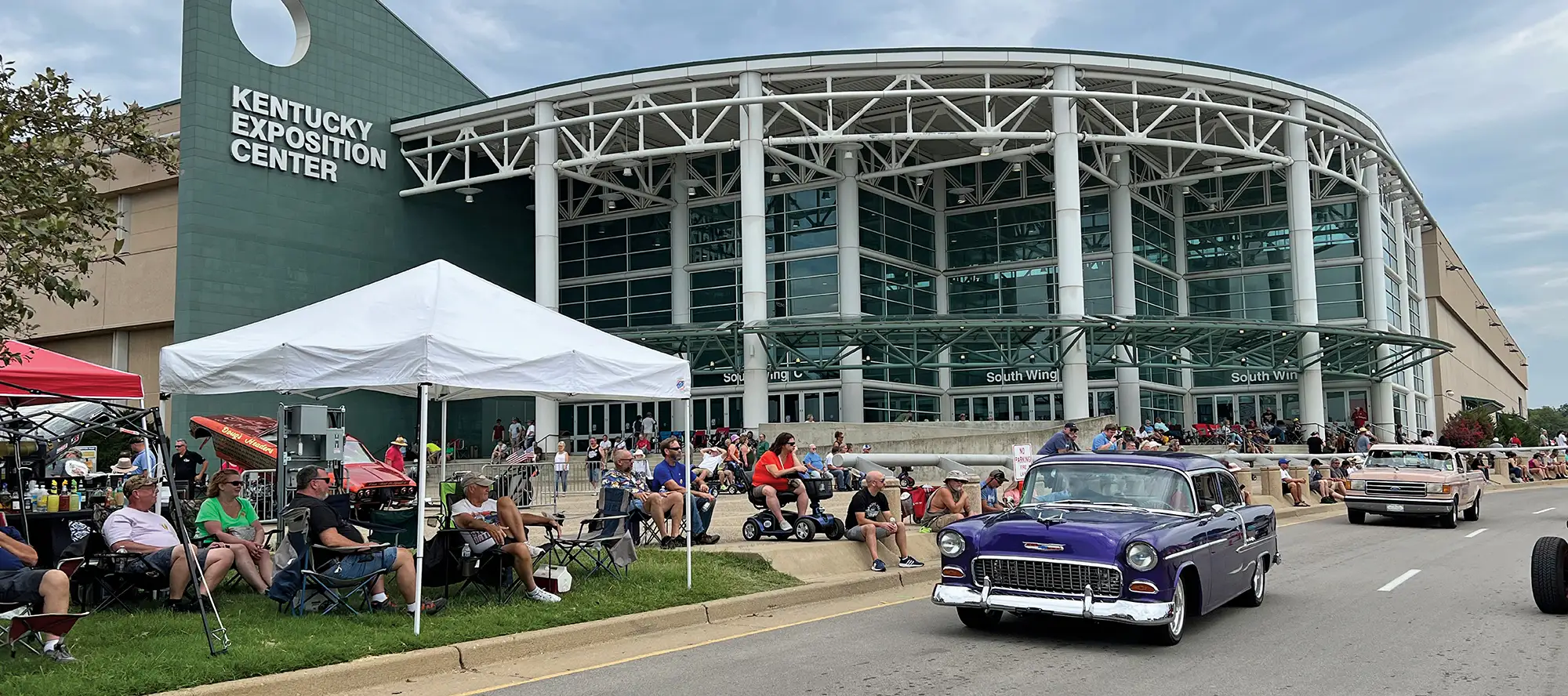
 Photography by THE AUTHOR
Photography by THE AUTHORt’s been a long time (1970) since the first Street Rod Nationals in Peoria, Illinois. Louisville, or one of its southern speak derivatives, has acted as home for the NSRA Nats at the Kentucky Expo Center since the late ’90s. The Nats is now the keynote event hosted by the National Street Rod Association while also serving as host to eight additional regional events. This year was the 54th running of the Nats (remember we are near the home of the Kentucky Derby).
From the numbers the NSRA tells us, there were 649 swap spaces—and we must confess it did look very busy—and 224 exhibitors. The truly big numbers are a direct result of the 9,112 registered street rods and a spectator gate (including participants) that was a tick over 58,000 individuals. Now that’s a four-day get-together.
More on the numbers, as they are impressive. Did you know that this event needs more than 500 volunteers that represent 40-plus car clubs and other associations as well as the NSRA staff that is ever present? The Lone Star Street Rod Association had six members driving a total of 4,770 street rod miles to Louisville while the Northeast Arkansas Street Rod Club had 13 members rack of 5,289 miles. If you like miles then how about the Long-Distance Continental USA Award garnered by Cody Bilson with his ’55 Chevy Bel Air from Bakersfield, California, coming in at 2,099 miles. Not to be outdone there was Mario Fortin of Saint-Eustache, Quebec, Canada, with his ’41 Dodge who captured the Long-Distance Outside Continental USA Award with his 926 miles.
Modern Rodding TECH
InTheGarageMedia.com

 Photography by Diny Divers
Photography by Diny Divershe availability of complete custom frames has changed the game for hot rodders, especially those in the Pro Touring segment of the hobby. Chassis and suspension technology has come a long way from the days of hacking the front suspension out of a Mustang II or Chevy Nova in a junkyard. These days, a full frame makes a lot of sense, but make no mistake—a full frame swap is a lot of work, no matter how you slice it. In the case of this ’67 Chevy II Nova, it goes a step further, thanks to the extreme fabrication efforts of Divers Street Rods (DSR) located in Sultan, Washington.
DSR ordered a new reproduction of the ’67 Chevy II Nova body from Real Deal Steel and a custom chassis from Art Morrison Enterprises (AME). The process of converting a unibody car to a full frame is already complicated because many of the body’s original structural areas must be removed to make room for the chassis. Part of the Air Sport product line, the chassis was designed to use air suspension and provide the absolute lowest ride height possible. DSR took that a step further by channeling the body over the chassis. With that in mind, DSR gutted the brand-new body, removing the original style floorpans, trunk pans, and firewall. This allowed them to place the body exactly where they wanted it.
DSR already had a specific tire and wheel combination in mind, so the tires were ordered to provide a nice mock-up for additional modifications. The AME chassis was ordered with a 112-inch wheelbase, 2 inches longer than the original Nova wheelbase. This was intentional, and DSR stretched the wheel openings to account for the added wheelbase and the extremely low stance. Other body modifications included stretched front fenders, a stretched hood, shaved door handles, shaved driprails, and much more, but the real focus of this article are the extreme measures taken to convert this unibody car to a full-frame Pro Touring beast.

 Photography by Wes Allison
Photography by Wes Allisonn February 2018, the NHRA Museum in Pomona, California, was packed with folks who were there for one thing: to honor the memory and life of Bob Bauder. Outside the facility the parking lot was full of the legacy Bob was so well known for: An exceptional group of cars he had built (fully or had-a-hand-in/on) over the previous five decades.
Though the collection was as varied as their current owners, they all had one thing in common besides Bob’s handiwork: They were all pure hot rods. Real-deal hot rods aren’t as prevalent nowadays as there may be too much emphasis placed on creature comforts but, rest assured, when Bob built a ride for either himself or a customer, each car was going to be a handful, and it was going to profile better than anything else around it.
Modern Rodding TECH
InTheGarageMedia.com


 Photography by Brian Brennan
Photography by Brian Brennanhey may not make ’em like they used to. But they sure never finished ’em the way we can now. The quality of contemporary body- and paintwork is truly unprecedented. More than straighten a panel, we can straighten an entire body from tip to tail.
Of course, nobody said it was easy. Prepping a straightened body for paint is a labor-intensive process of raising low spots with fillers and milling the surface to a consistent level. And historically speaking, it was a rinse-and-repeat process of filling and sanding interspersed with long cure times.
The act will always eat up time, money, and energy, but today’s techs figured out ways to minimize the investment. Rather than incrementally build up the surface of a panel bit by bit, they discovered that they could just skim vast sections of a panel with filler and knock it all down to the panel’s highest level in one fell swoop. When done properly, the filler ends up no thicker than it would by any other method. But the process reduces time and minimizes material that ends up on the floor as dust. And at today’s labor and material costs, that’s saying something.
InTheGarageMedia.com

 Photography by Wes Allison
Photography by Wes Allisonhen speaking with Gary Upton, of SoCal, it becomes obvious of his lifelong fascination with ’40 Fords. Just prior to owning this potent ’40 Ford coupe he owned and drove a hot-rodded ’40 Ford pickup. However, the hopped-up Merc Flathead and modified stock chassis, while having served their purpose, had come to the end of its usefulness. Gary felt it was time to move onto something more in keeping with his relocation from the back roads of Oregon to the SoCal freeways.
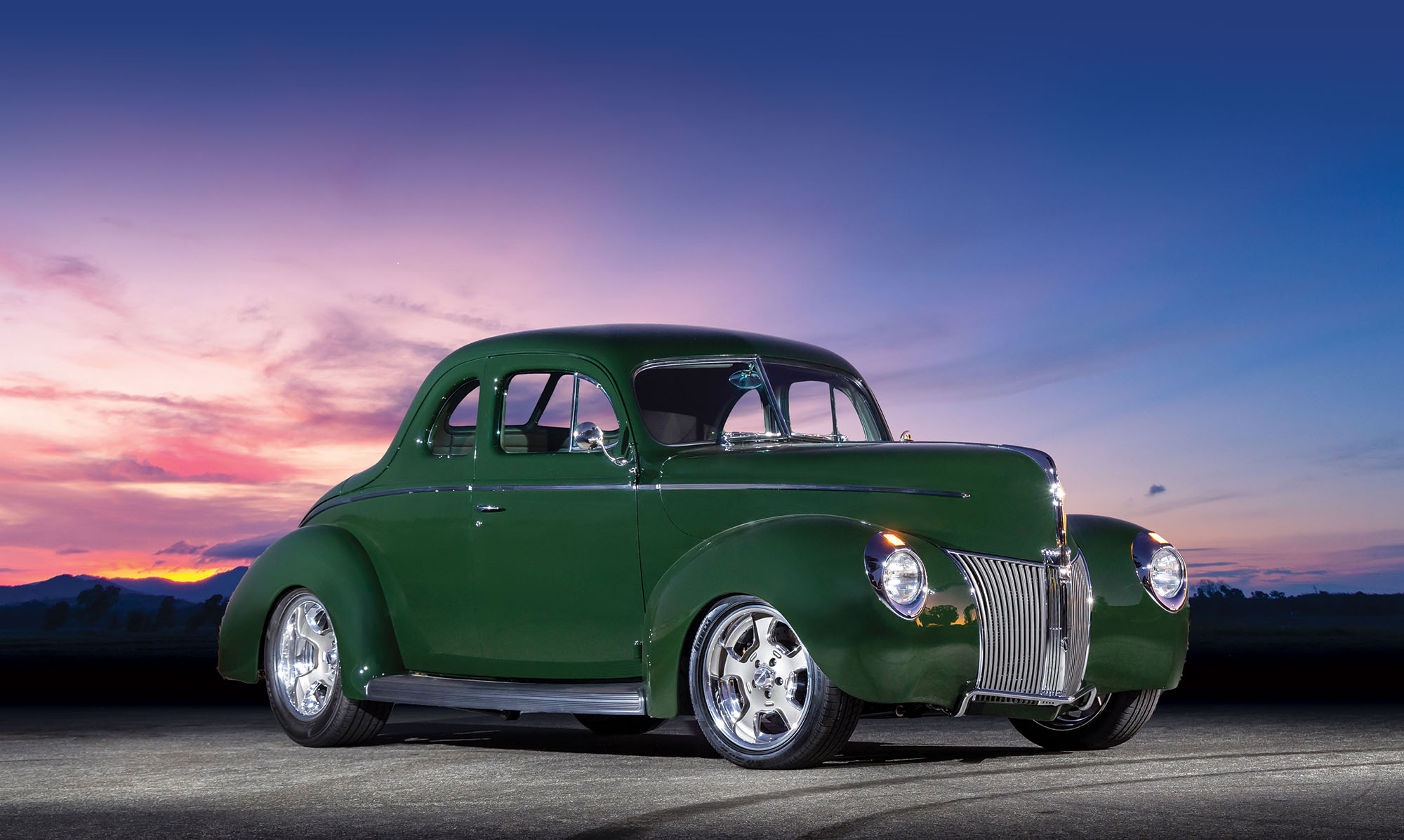
Modern Rodding TECH
InTheGarageMedia.com
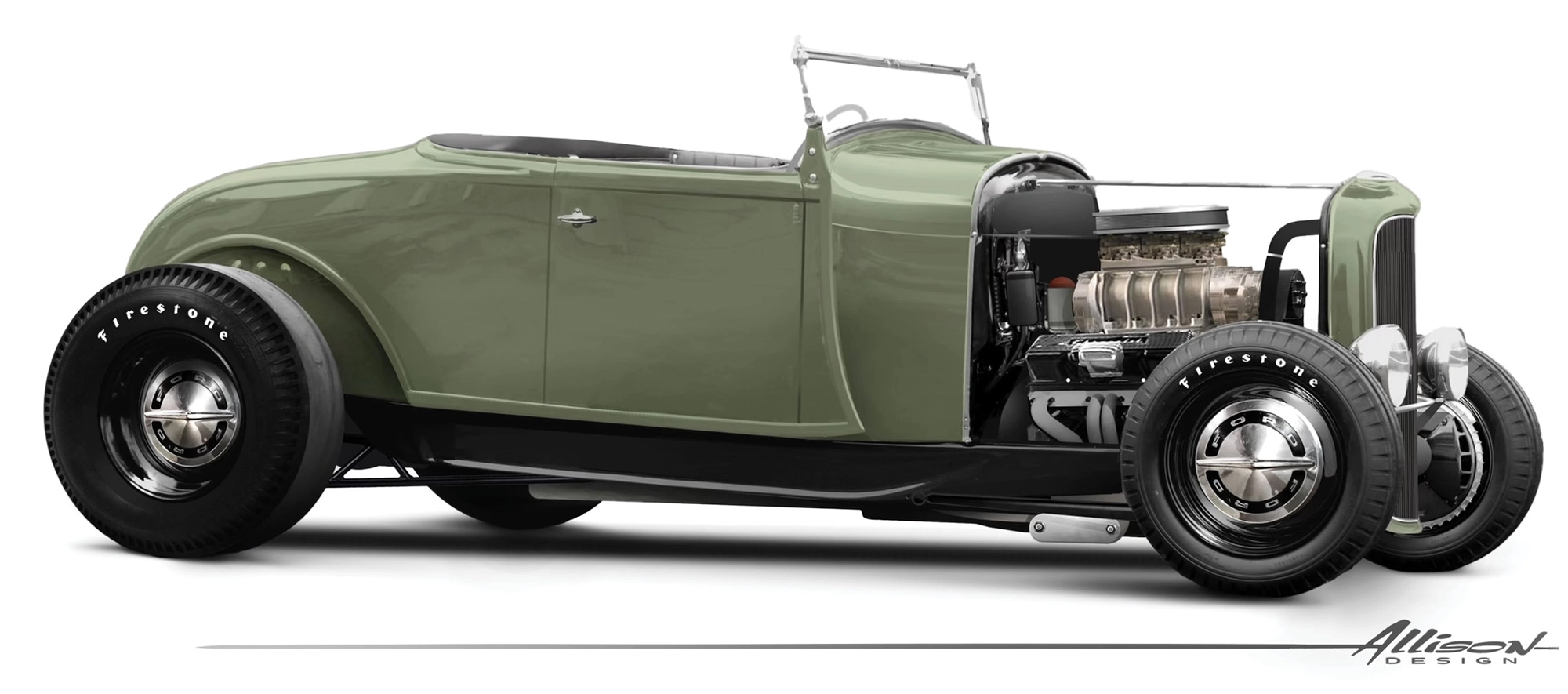

 Photography by Jason Scudellari
Photography by Jason Scudellarihere are often some adjustments needed when cramming modern powerplants into early cars. In this article we will follow Jason Scudellari at the In The Garage Media Tech Center as he modifies the firewall, toeboard, and floor of his Brookville ’29 Ford roadster body (sitting atop a Speedway Motors chassis) to accommodate a small-block Chevy engine and a TREMEC TKX five-speed.
The back of most V-8 engines is knobby and convoluted, so it often makes sense to take an incremental approach, nibbling away at the firewall, toeboard, and floor until sufficient clearance is created. It’s usually a good idea to position the engine as far back as practical. This gets more of the weight transferred to the rear, and on early cars, extra room is often needed between the engine and the radiator so a proper fan can be fitted.
It’s worth mentioning that if you mount the engine back a lot, it does put more weight on the rear wheels, but it will reduce the foot room for the driver and passenger and make underhood engine access more challenging. Usually, finding a reasonable compromise is the best approach.
InTheGarageMedia.com
By Dale M. Moreau  Photography by THE AUTHOR
Photography by THE AUTHOR

Gary Coe’s ’55 Thunderbird is not Like the Coyote-Powered Cobra Jets That he Races
his incredibly beautiful ’55 Thunderbird is not the first one Gary Coe has owned. He still owns the “driver” ’56 that spawned the dream that you see here. He wanted to build a really nice car but knew it would take years, and he didn’t want to be without it. It’s a 30-foot car, but a fast one, with a 392ci Windsor motor. But, it would never stand up to the Coyote power he planned for the new one. Gary started with a body with no frame that he picked up at Bird Brains in Aurora, Oregon. Loading the body in his own custom-made car hauler, Gary took it to Steve’s Auto Restorations (SAR) in Portland, Oregon. SAR sent the measurements of the body to Art Morrison Enterprises for one of their custom chassis. They created a new frame and suspension to wrap around the potent Coyote DOHC V-8.
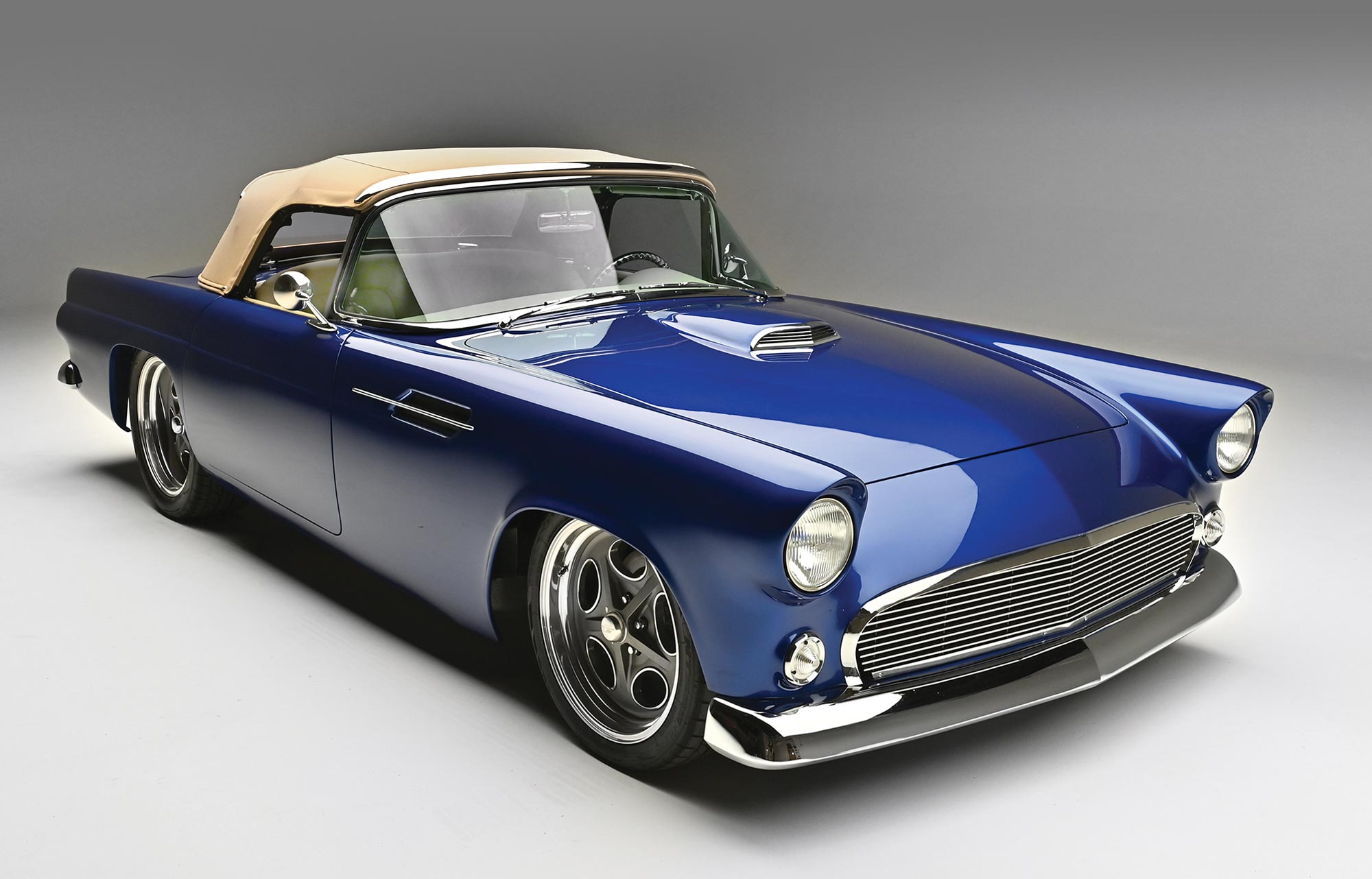
Modern Rodding TECH
InTheGarageMedia.com
Photography by Rodger Lee
ARTWORK BY TAVIS Highlander
n this installment, we’ll wrap up our coverage of the outstanding build on Danny Shaffer’s ’57 Ford Ranch Wagon that’s being constructed at Ironworks Speed & Kustom.
One-off wheels were designed for this project, inspired by Halibrand racing wheels of the ’50s. As with many other components on this car, the wheels were rough sketched by hand, then final design was done in CAD, and they were printed in plastic to make sure everything was spot-on before machining from billet aluminum. The wheels were machined by EVOD then polished to perfection and chrome plated for durability.
A huge amount of work went to the underhood area, with the goal of cleaning up every surface while keeping an OEM flavor. After exploring several variations, the inlet tube for the fuel injection was routed diagonally across the driver side cylinder head, which required a specially machined adapter to position the throttle body at a precise angle. It is ribbed and contoured so it is consistent with the styling theme used underhood. Special covers were machined to hide the plug wires and the injector wiring, and special grilles with curvaceous louvers were machined for the inner wheelwells.
InTheGarageMedia.com

 Photography by THE AUTHOR
Photography by THE AUTHORhere’s nothing more stunning than a custom car crafted with baselines from Chevrolet, Ford, or Mercury. Massaging and finessing panels while also reimagining the use of various body parts fused with stance and style are some of the most critical elements that bring a custom to life. It takes a special group of talents to make it all come together, as seen here with the seductively mild ’54 Chevy Bel Air laid out across our pages, owned by John Hall Jr. of Chesapeake, Virginia. The build embodies everything cool, bringing it to iconic status, regardless of whether it’s on the show field or racking up miles cruising down the highway.
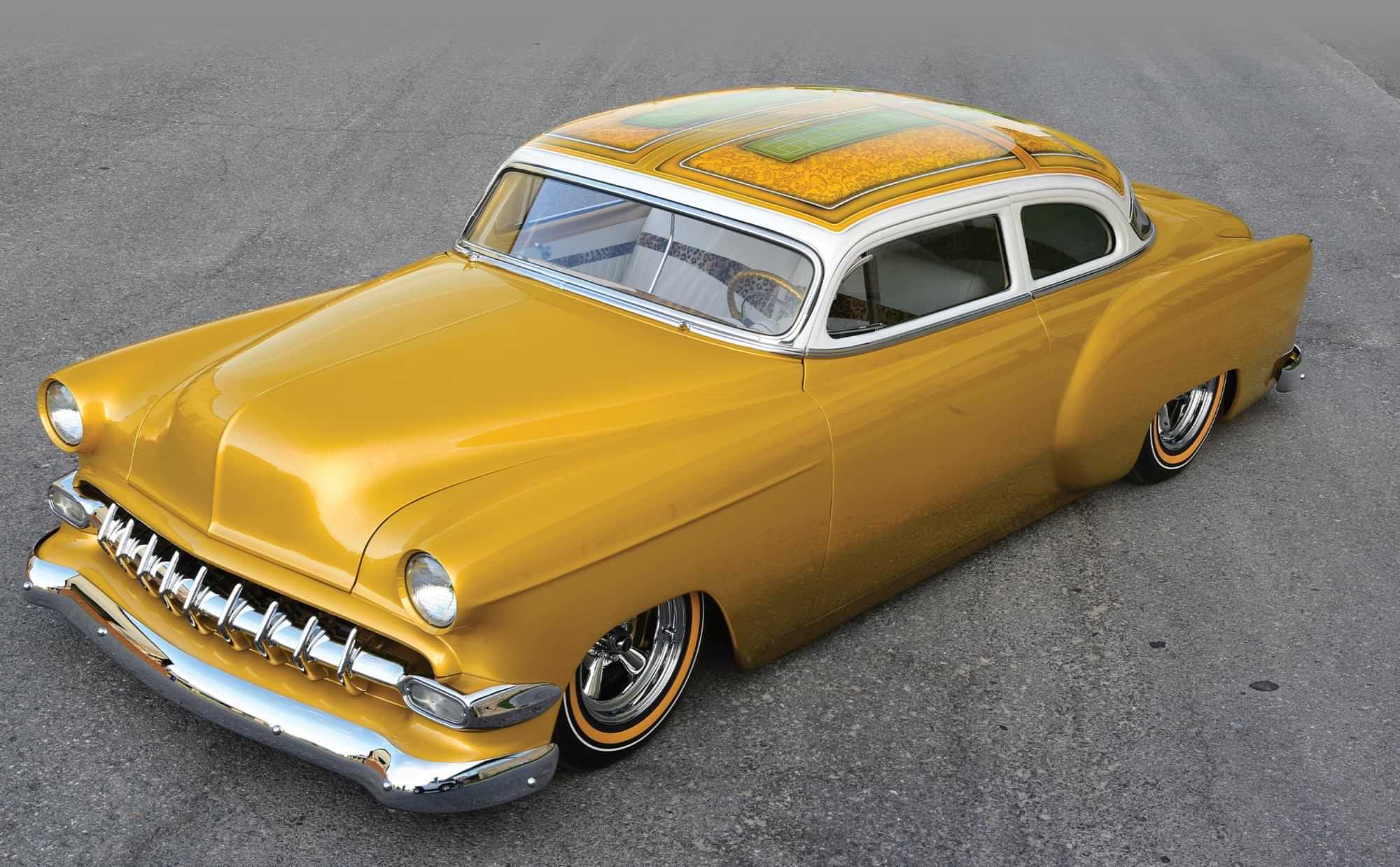
View Index
- AFFORDABLE STREET RODS
- AMERICAN AUTOWIRE
- AMSOIL
- ART MORRISON ENTERPRISES
- AUTO METAL DIRECT
- AUTOMOTIVE RACING PRODUCTS
- BOWLER PERFORMANCE TRANSMISSIONS
- CHEVS OF THE 40’S
- CLASSIC INSTRUMENTS
- CLASSIC PERFORMANCE PRODUCTS
- CLASSIC PERFORMANCE PRODUCTS
- CONTROL CABLES
- CUSTOM AUTOSOUND
- DAKOTA DIGITAL
- EATON DETROIT SPRING, INC.
- FAT MAN FABRICATION
- FITECH EFI
- FLAMING RIVER INDUSTRIES
- FLAMING RIVER INDUSTRIES
- FPM METALS
- GEARSTAR PERFORMANCE TRANSMISSIONS
- GRANATELLI MOTOR SPORTS, INC.
- HAYWIRE
- HEINZMAN STREET ROD SHOP
- HEMMINGS
- HOT HEADS RESEARCH
- JJS ROD & CUSTOM
- JOHNSONS HOT ROD SHOP
- LOKAR
- LOKAR
- NATIONAL STREET ROD ASSOCIATION
- NEW PORT ENGINEERING
- NOTCHEAD FASTENERS
- POWERMASTER PERFORMANCE
- RARE PARTS
- SCOTT’S HOTRODS
- SPECIALTY AUTO PARTS USA, INC.
- SPEEDWAY MOTORS
- THERMO-TEC AUTOMOTIVE
- VINTAGE AIR
- WILWOOD ENGINEERING
Parting Shot
InTheGarageMedia.com
 By BRIAN BRENNAN
By BRIAN BRENNANhe death of Andy Brizio, The RodFather, is a powerful and deeply felt loss for all of us, but the Celestial Rodding Hall of Fame just welcomed one of the truly great ones. Andy, who has long served the hot rod world in many capacities, will no longer be gracing the hot rod world; he died on August 1st of this year.
A great deal has been written on and about Andy throughout his famous career. He was a regular on the pages of car magazines going back to the ’70s and pretty much any hot rodder around today knows the story about his time as a flag starter at Half Moon Bay, which led to a job at Champion Speed Shop and then a partnership with Cub Barnett in Champion. It was in 1967 that Andy produced the Instant T, and it was in 1970 that he built an America’s Most Beautiful Roadster–winning Instant T. More on Ts … Andy was also very well known for his Andy’s Tees, a company that produced T-shirts for years for hot rodders all over the country.
He was friend and driving partner to many hot rodders over the years. To me Andy will always be my friend but there are three stories in particular that are “pressed between the pages of my mind” forever. I first met Andy at Crow’s Canyon in NorCal at his long-running and famous Andy’s Picnic. I believe the event started in 1966 and I was to meet Andy at the “Picnic” in 1971. I had just started my lifelong ambition to take pictures and write about hot rods. It was Tex Smith who introduced me to Andy, and I clearly remember his smile and how he shook my hand. I felt I had known him for years and that he was my friend. Over the next 50 years that feeling never wavered.








